TCL P755 stands out primarily due to the Google TV system, which makes daily use of the television easier. It is user-friendly, operates smoothly, and provides access to numerous applications, while personalized recommendations help quickly find something to watch. Support for AirPlay and Windows Miracast allows for easy screen mirroring from other devices. All of this makes the television a great option as a home entertainment centre. Regarding picture quality, P755 offers solid performance for its price. Dolby Vision makes HDR content look better – colours are vibrant, and contrast is sharper. The wide colour gamut ensures that the picture is saturated and natural, which is particularly noticeable when watching movies. Additionally, the television has a high native contrast, which distinguishes it in this price range. For gamers, the P755 can also be an interesting option. Low input lag allows for smooth gameplay, and games run responsively. Of course, the 60 Hz panel does not offer perfect fluidity, and the HGiG feature does not work flawlessly, but for occasional gaming, this model is sufficient. However, it is not without flaws. Low brightness means that the picture in bright rooms may be less readable, and the viewing angles are quite average. Dithering may also pose a problem, causing artifacts in darker scenes, especially if we use the television as a monitor – fonts on the screen are less readable. TCL P755 is a good choice for those seeking an affordable television with features. Dolby Vision, a wide colour gamut, and low input lag are the strong points of this model. Although brightness and viewing angles could be better, it offers a lot for the price and is well-suited for everyday viewing or occasional gaming.
- Matching (Score)
- Our verdict
- TV appearance
- Where to buy
- Contrast and black detail
- HDR effect quality
- Factory color reproduction
- Color reproduction after calibration
- Smoothness of tonal transitions
- Image scaling and smoothness of tonal transitions
- Blur and motion smoothness
- Console compatibility and gaming features
- Input lag
- Compatibility with PC
- Viewing angles
- Daytime performance
- Panel details
- TV features
- Apps
- Playing files from USB
- Sound
TCL P755 vs TCL P7K / P79K
Direct comparison
P755
P7K / P79K

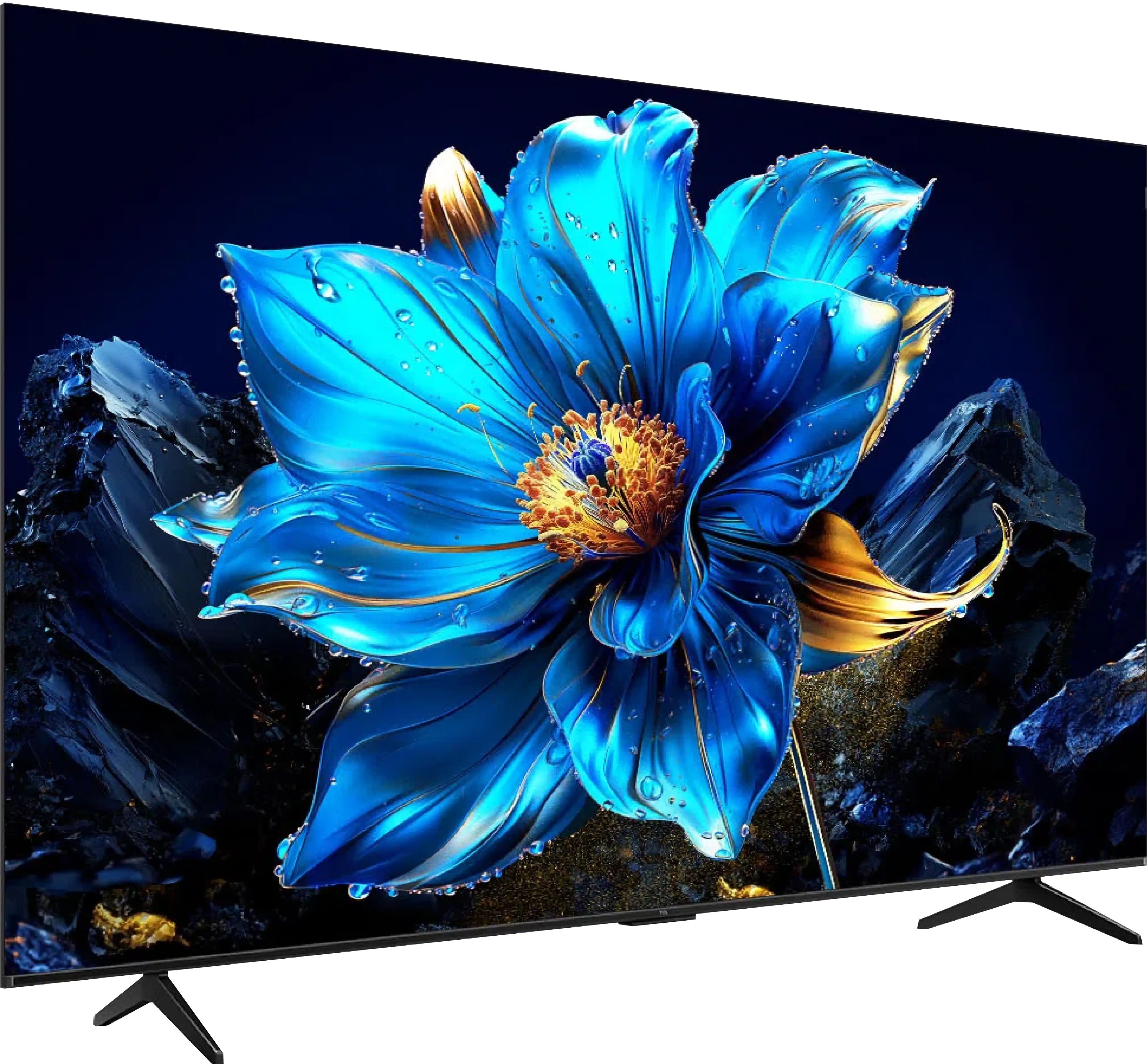
Panel type: LCD VA
Resolution: 3840x2160
System: Google TV
Model year: 2024
Complete the survey to find out the result

Panel type: LCD VA
Resolution: 3840x2160
System: Android TV
Model year: 2025
Complete the survey to find out the result

Overall rating
5.8
5.8
Movies and series in UHD quality
5.9
5.1
Classic TV, YouTube
6.0
5.5
Sports broadcasts (TV and apps)
5.1
5.3
Gaming on console
6.8
7.1
TV as a computer monitor
2.5
2.0
Watching in bright light
3.8
4.6
Utility functions
7.3
7.0
Apps
9.6
9.6
Sound quality
5.8
6.2
Complete the survey to find out what fits your preferences
Advantages
High native contrast
Support for advanced features for gamers
Extensive Google TV operating system
Low input lag
Support for all HDR formats
Support for all Dolby and DTS audio formats
Great black and high contrast
Support for 120 Hz in games (at lower resolutions)
Very low responsiveness (input lag), excellent for dynamic gameplay
Modern features for gamers, such as VRR and ALLM
Smooth Google TV system with a massive app base
Very well-functioning Google Assistant in Polish
Easy screen mirroring from your phone (support for AirPlay)
Attractive price
Disadvantages
Low brightness
Average viewing angles
HGiG mode not functioning correctly
Poor font readability
Low brightness, which makes the HDR effect poor, and the image is hard to see in sunlight
The image loses quality and colours when viewed at an angle
Not suitable as a computer monitor due to very poor readability of text
Strong dithering phenomenon (heavily digital image)
Our verdict
It’s time to gather all observations. The TCL P7K / P79K is a television that smartly juggles compromises, offering significantly more in its price range than one might expect. Its undeniable advantage is the VA panel, which guarantees deep blacks and high contrast, while an impressively rich package for gamers (with VRR and support for 120 Hz at lower resolutions) makes it a phenomenal choice for console owners. The whole thing is tied together by a functional Google TV system. Of course, the low peak brightness means that HDR content lacks spectacular highlights, and the TV's performance in sunlit rooms is limited. And while, at its relatively low price, the P7K / P79K is quite a decent option, its biggest rival turns out to be… its more refined sibling, the P8K. Often FOR a small extra fee, we get a device that is a class above – with a native 4K 144 Hz panel, significantly better audio system, and generally higher operational quality, which is reflected in its much higher rating on our portal. Therefore, the final verdict must be as follows: if your budget is absolutely non-negotiable, the P7K / P79K will be a good and cost-effective choice. However, if you can afford to add a small amount, the P8K model will offer significantly more and will ultimately be a more satisfying investment.
TV appearance




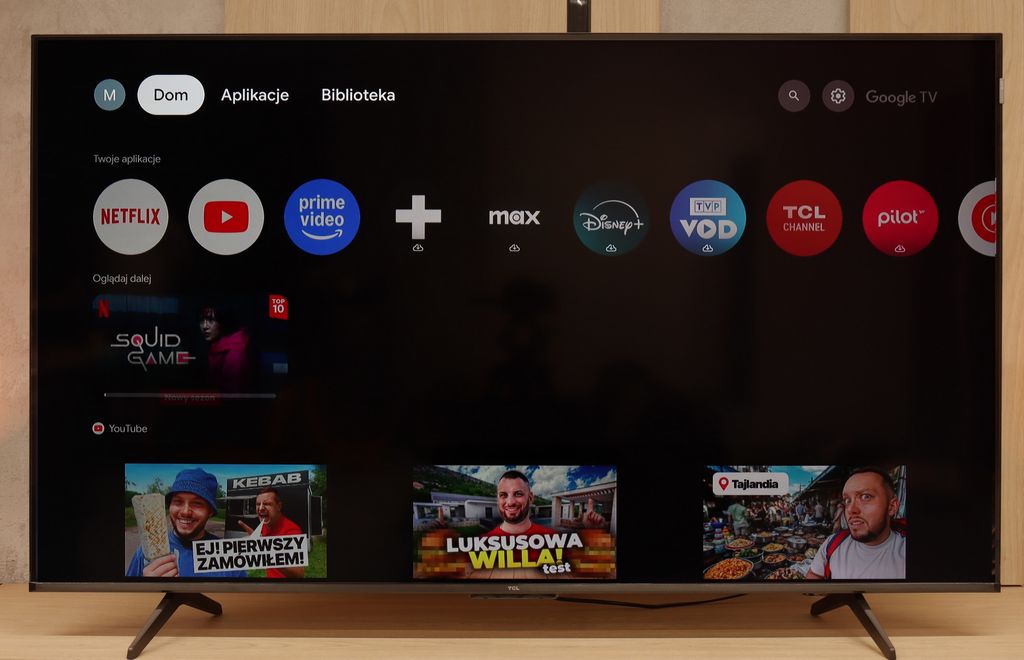
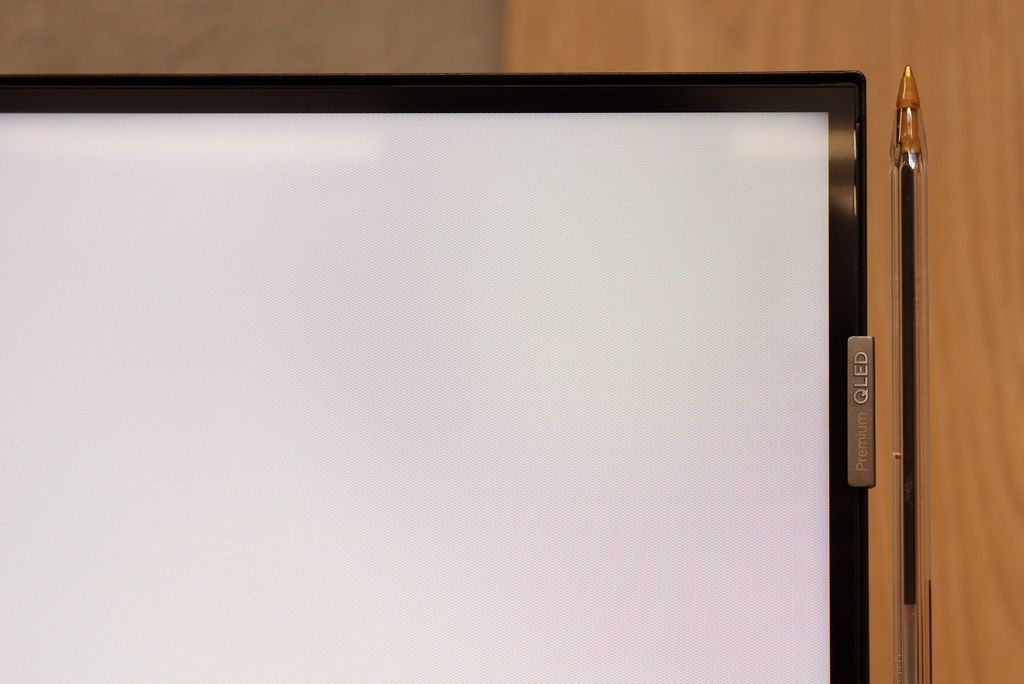
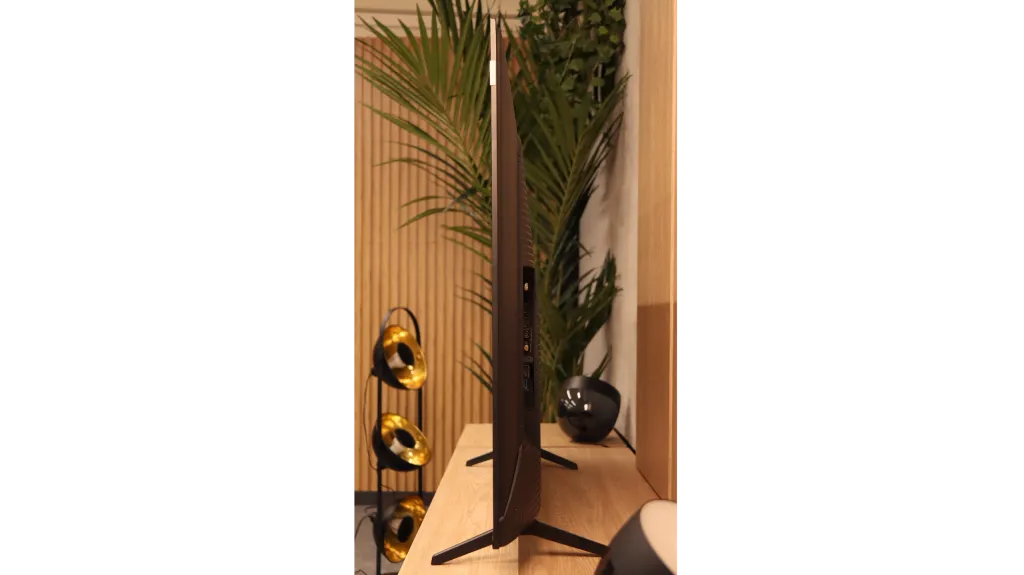
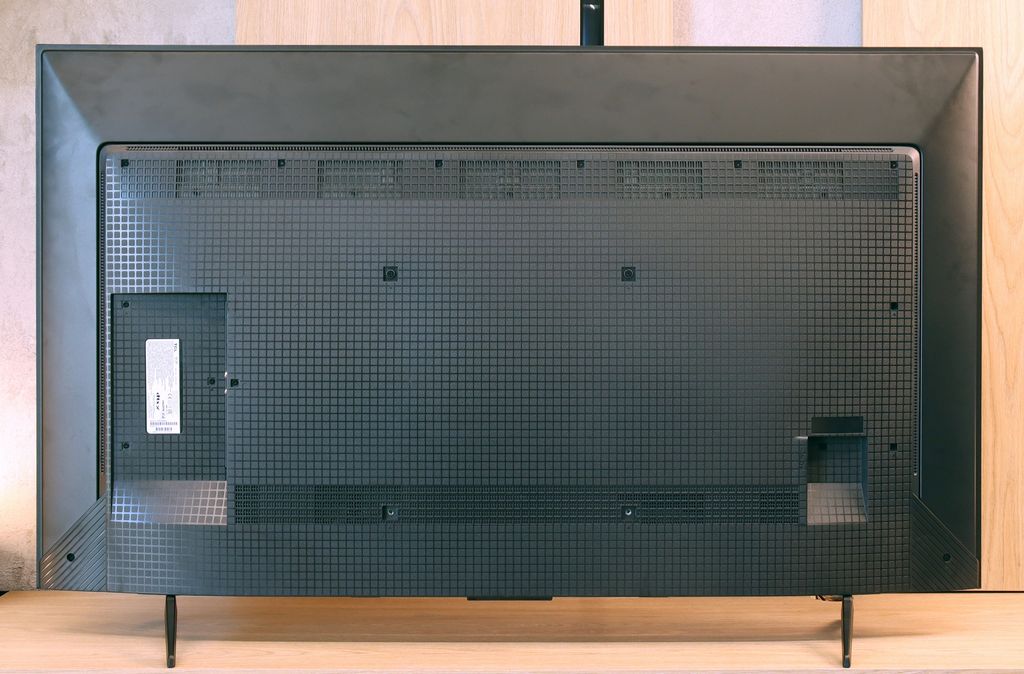
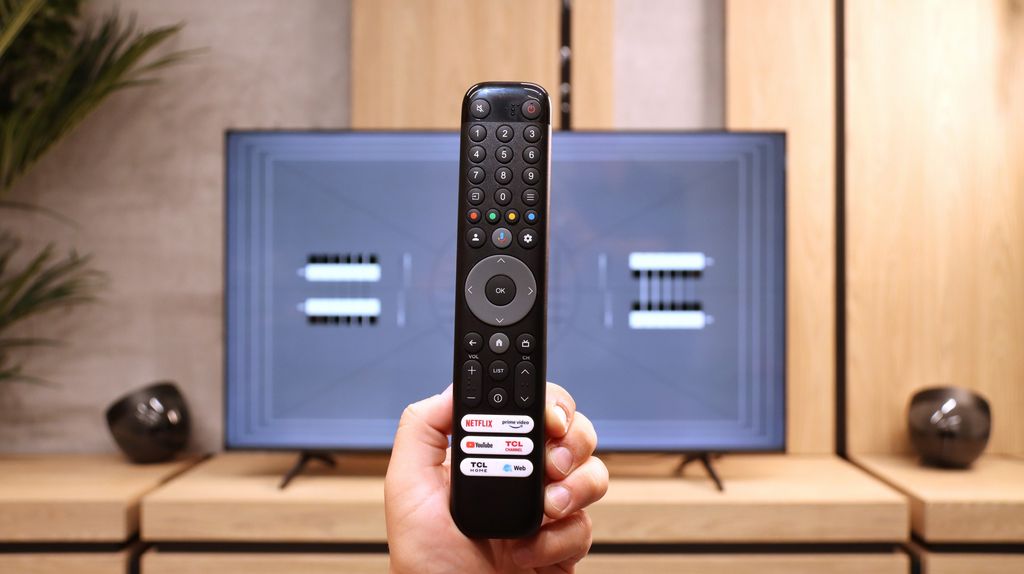
Contrast and black detail
6.1/10
5.2/10
Local dimming function: No
Local dimming function: No
Contrast:

Result
5,650:1

Result
6,750:1

Result
5,850:1

Result
6,550:1

Result
6,100:1

Result
4,000:1

Result
6,500:1

Result
2,700:1

Result
2,800:1

Result
3,800:1
Halo effect and black detail visibility:

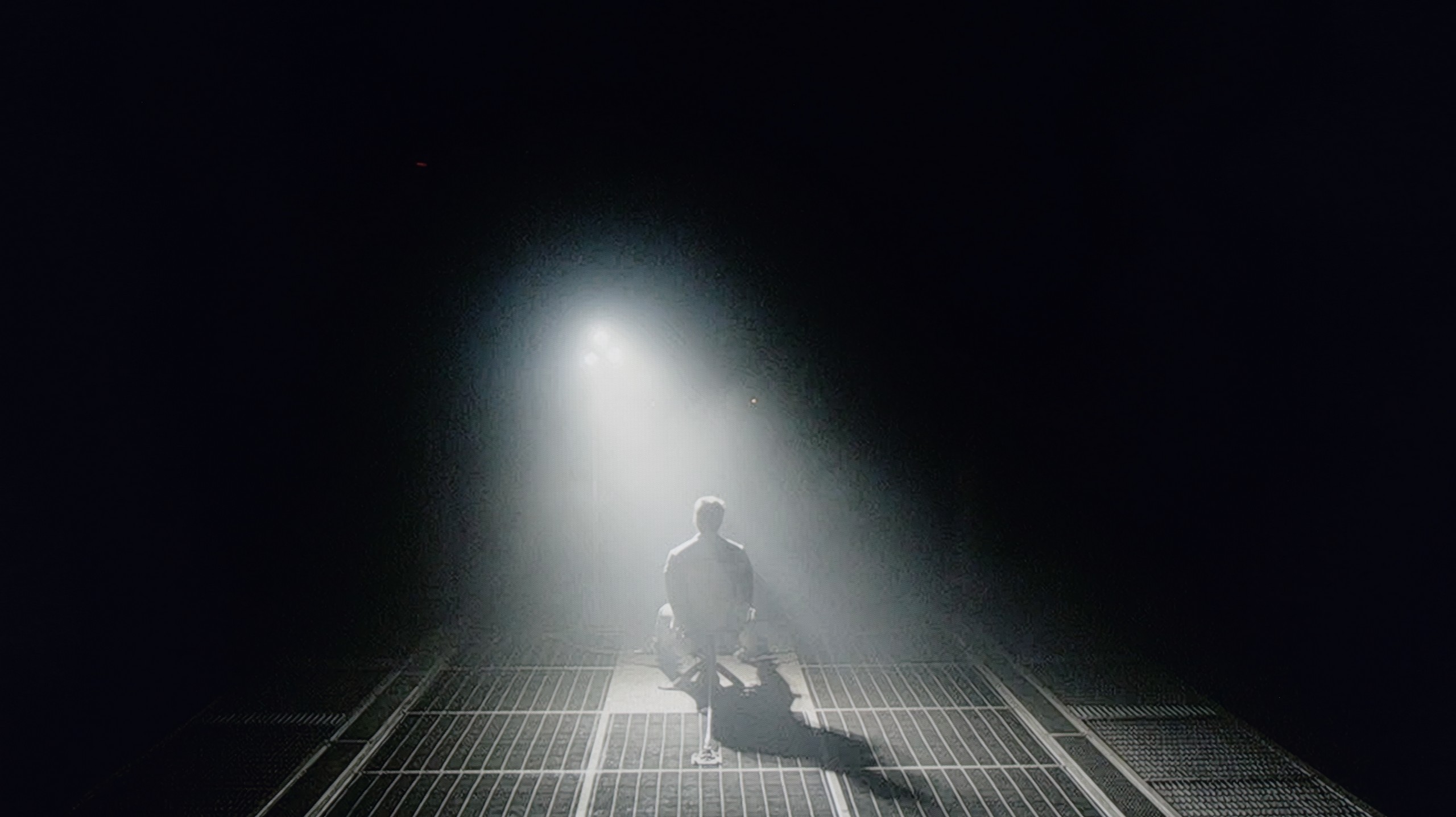
TCL P755, equipped with a VA panel, offers very high contrast, which translates to deeper blacks and better detail reproduction in darker scenes compared to IPS/ADS panels. The panel in this model has an exceptionally high native contrast. In movie mode, contrast is a strong point of the television, but the lack of local dimming technology means that blacks are not perfectly deep. They often take on shades of navy, which can be particularly noticeable in dark movie scenes. During testing on the film Sicario 2 , some flaws were also noted in the form of uneven backlighting, which can distract from important details in the blacks, reducing overall immersion in the scenes. However, it's important to remember that this comment pertains to the unit we tested; nevertheless, it's worth keeping in mind that similar shortcomings may occur in another unit.
In discussions about image quality, the conversation almost always begins with the issue of black depth and contrast, which are parameters defining the plasticity and realism of the viewed world. And here, the TCL P7k/P79k immediately lays its strongest advantage on the table – a VA-type panel. It is its construction that ensures the native relationship between the brightest and darkest parts of the image is more than satisfactory, especially in the context of the price segment this model represents. In the majority of scenes, the achieved black has a noble depth, which allows for building an engaging spectacle for the viewer. To illustrate the scale, it's worth mentioning that competing constructions based on IPS panels often offer results that are even four or sometimes five times lower, which constitutes a chasm in direct comparison. Of course, as we venture into the territory of budget-oriented models, we must be aware of certain compromises. Thus, in the discussed television, we will not find an advanced local dimming system that could further enhance the impression of contrast. The absence of this feature is, however, fully understandable and constitutes a logical consequence of the product's positioning in the market – this technology in TCL's portfolio for 2025 has been reserved for higher-positioned, more prestigious series marked with the letter "C".
HDR effect quality
4.2/10
4.3/10
Luminance measurements in HDR:

Result
190 nit

Result
238 nit

Result
272 nit

Result
248 nit

Result
283 nit

Result
206 nit

Result
247 nit

Result
297 nit

Result
237 nit

Result
281 nit
Scene from the movie “Pan” (about 2800 nits)


Scene from the movie “Billy Lynn” (about 1100 nits)


Static HDR10


Dynamic: Dolby Vision
Dynamic: Dolby Vision


HDR luminance chart:
TCL P7K / P79K
HDR luminance
TCL P755
HDR luminance
TCL P755 provides average HDR effect quality. The maximum brightness of the TV is slightly below 300 nits. Such brightness limits the intensity of bright areas in HDR content. In practice, this means that bright elements may not be sufficiently pronounced, affecting the overall impression of contrast. However, the TV offers wide coverage of the DCI P3 colour gamut, reaching about 93%. As a result, colours are vibrant and saturated, significantly improving colour reproduction quality in HDR content. Despite the limited brightness, the wide colour range allows for richer and more realistic shades.
When it comes to assessing HDR performance, we need to be clear and straightforward without any marketing fluff: the P7K/P79K is not and never was meant to be a champion in this area. The maximum peak brightness that this panel can generate hovers around just 300 nits. This represents a threshold, a sort of thin red line between what can be considered barely satisfactory HDR signal and what is, in reality, only slightly better than standard dynamic range (SDR), unfortunately leaning towards the latter. Synthetic tests confirmed this harsh reality – our measurements taken during movie sessions showed that the luminance in key bright scenes rarely exceeded 200-250 nits. Therefore, this is not a TV that would allow content created in a wide tonal range to truly shine, and that must be openly acknowledged.
Unfortunately, the issue of colour reproduction is presented just as conservatively. Although the manufacturer positions this model within the "QLED" family, owing to the use of a PFS LED filter, the results do not match the heightened expectations. The coverage of the wide DCI-P3 colour gamut reaches only 86%. Compared to the market, this is at best an average result, since most devices that utilise additional layers to expand the colour spectrum easily achieve values at a minimum of 90-92%.
Factory color reproduction
6.2/10
5.9/10


Factory Mode
After calibration
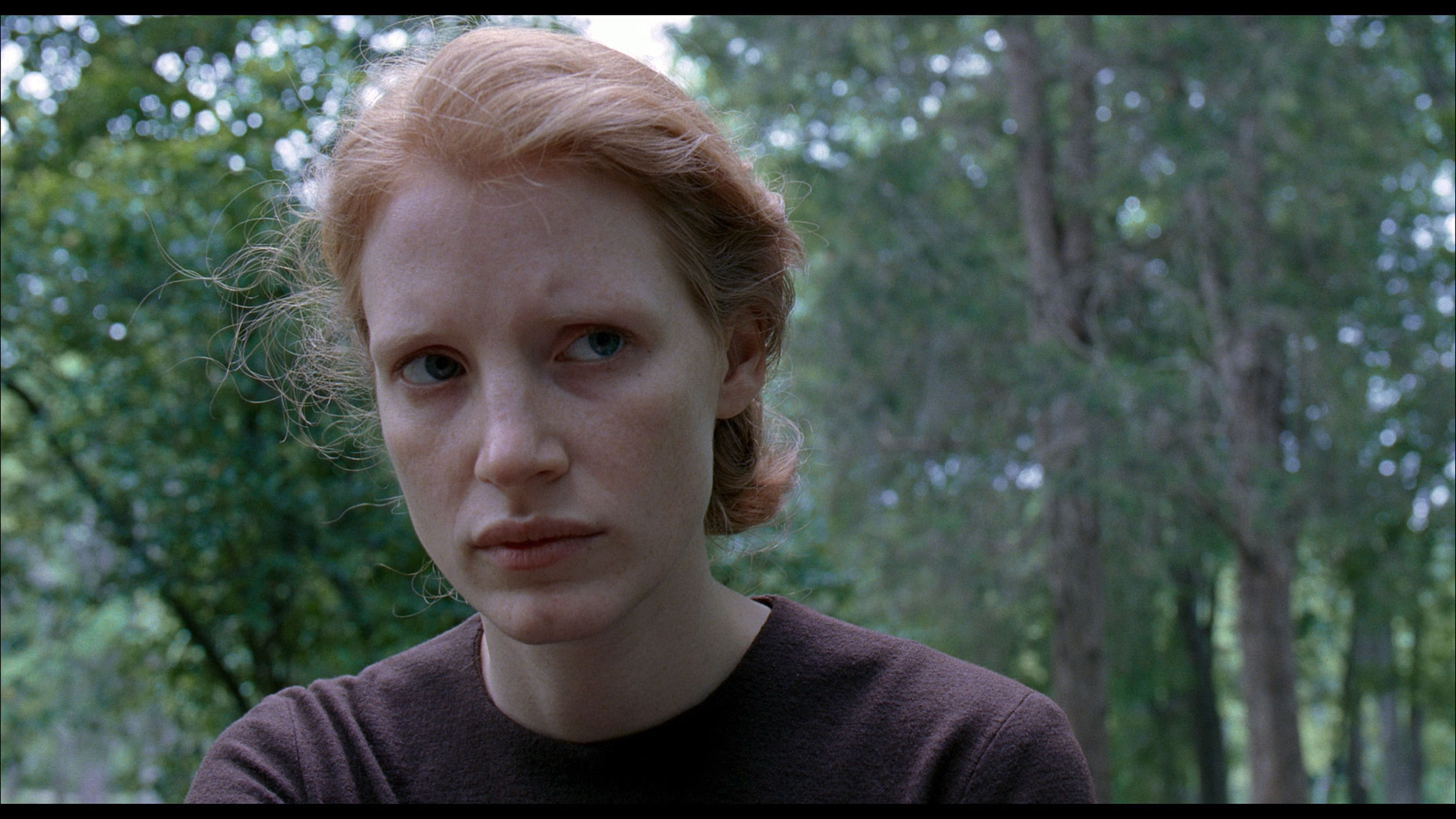
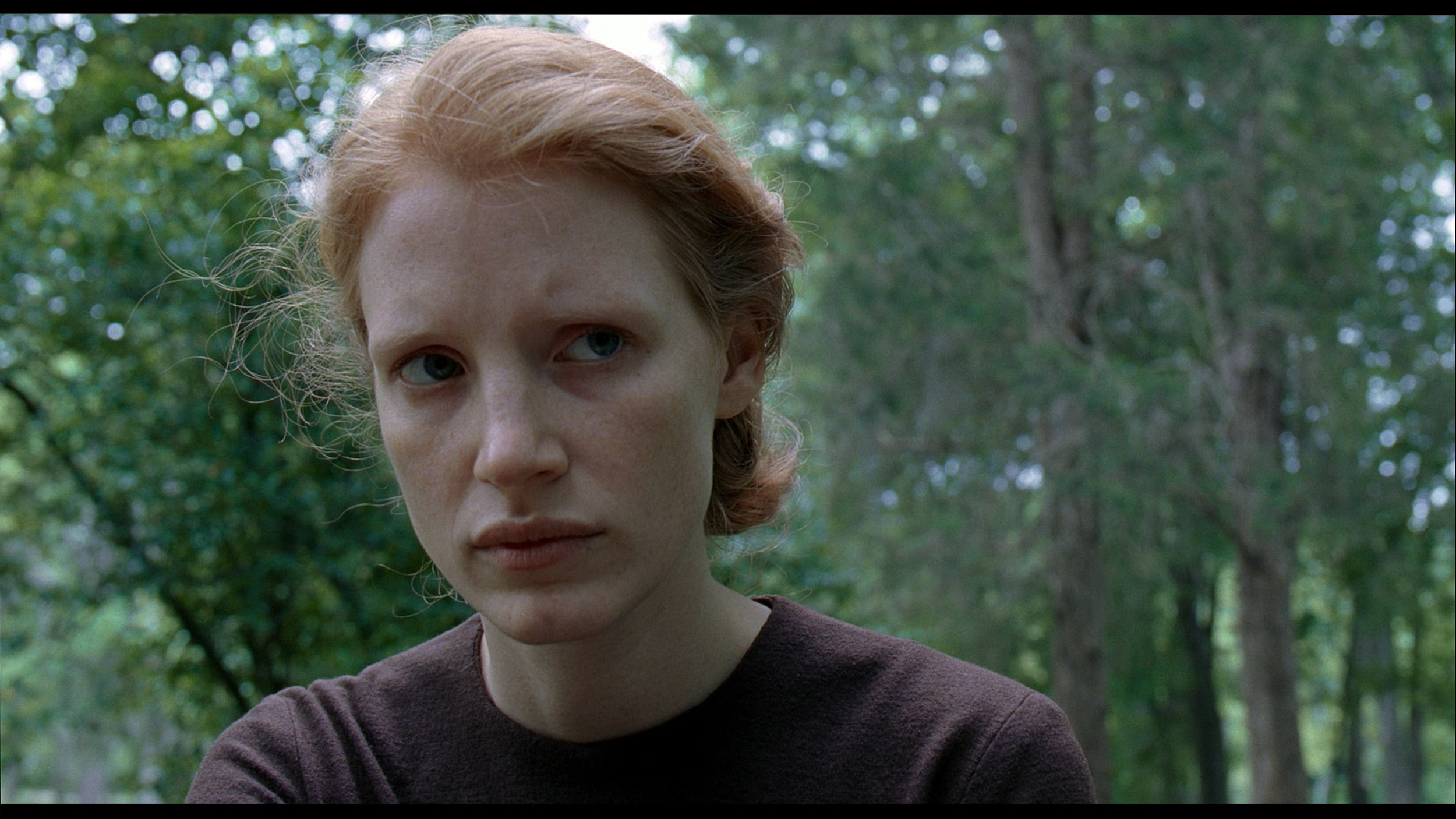
Factory Mode
After calibration
The colour reproduction in the P755 in "Cinema" mode, although it is the best factory setting, leaves much to be desired. The biggest issue is the white balance, where the chart clearly shows a spike in the red colour and a drop in the green colour. This leads to a shift in colours towards red, causing the colours on the screen to appear less natural and may look incorrect, especially in scenes with a white or neutral background. This is confirmed by the "Colour Checker" test, which reveals that the colours are indeed shifted towards red, affecting the realism of the image and reducing the perception of colour depth. In terms of contrast, the gamma chart analysis shows significant fluctuations, particularly in the dark areas of the image, where values drop below the optimal level of 2.4. As a result, darker areas may be displayed brighter than they should be. Additionally, the EOTF curve, responsible for brightness reproduction, sits slightly above the reference curve. The graph shows a slight increase in brightness to about 50%, after which there is only a minor drop. This leads to excessive brightness enhancement in the mid-range of the image and may result in loss of detail and distortion in brighter scenes.
Every reliable assessment of image quality must start with selecting the most optimal, factory preset mode. In the case of the tested P7K/P79K model, the choice was made without hesitation for the "Film" mode. It is the mode that presents an image closest to the intentions of its creators, avoiding both the exaggerated brightness of the dynamic mode and the excessive dimming known from eco settings. And it must be admitted that, for a device in this price range, the factory calibration is surprisingly decent, although it is not without a few stumbles. The most noticeable shortcoming turned out to be the not entirely correctly set white balance. A slight dominance of the blue component gives the image a subtly cool, frosty character, straying from the ideal neutrality that the director intended to show us. The television handles the reproduction of greyscale in the standard dynamic range much better – the gamma curve is almost exemplary. The only slight reservation can be made for the darkest parts of the image, where a delicate deviation from the norm causes a loss of some detail in the shadows. The most significant challenge, however, for the TCL software was interpreting the HDR signal, as illustrated by the EOTF curve. The television follows its own, rather free path here – the darkest details are disproportionately brightened, followed by a noticeable slowdown in brightness increase for mid-tones. Fortunately, most of these imperfections are of a software nature, which can be eliminated. With that thought in mind, we proceeded to the process of professional calibration.
Color reproduction after calibration
7.6/10
7/10



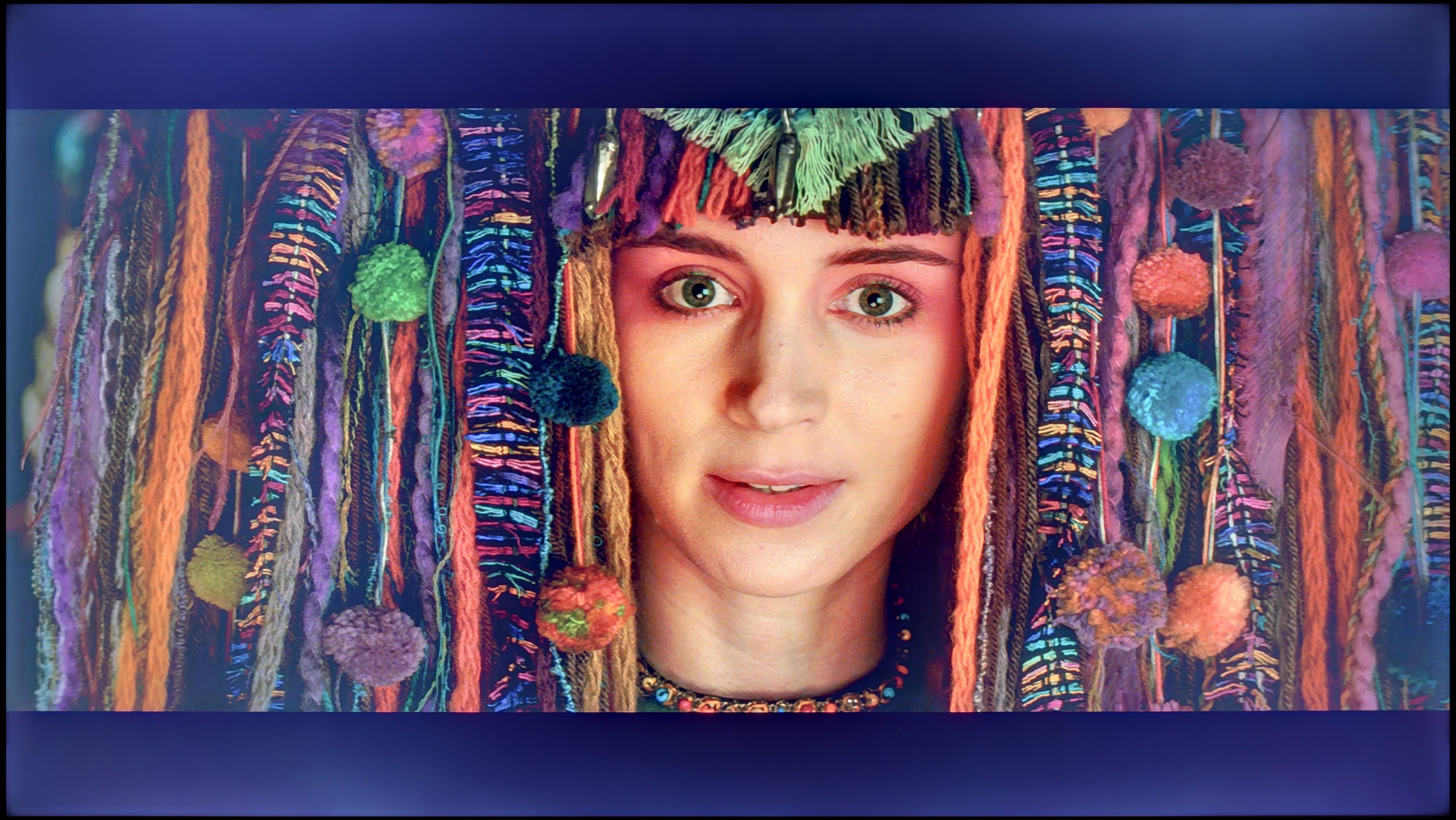
After calibration, the colour reproduction on the television significantly improves when it comes to SDR content. The colour curves are now close to the ideal value, and the gamma is more stable. Although the dip at the beginning of the graph to the values is still present, the overall accuracy of colour reproduction is much better. The “Colour Checker” test shows that most colour samples have errors below level 2, indicating improved colour fidelity. A few deviations are present, but generally, the colours are now more realistic and consistent with reality.
Calibration also brings improvements in HDR content. The white balance has been corrected, translating to more natural colour reproduction. The EOTF curve, although now closer to the reference curve, still shows a slight boost in brightness at the beginning of the graph. This leads to minor distortions in very bright scenes, but the overall tonality and detail have been enhanced. Dynamic tone mapping works more effectively, improving image quality in bright areas and preserving more details.
Although the image from the device does not achieve full perfection, calibration brings significant improvement. After adjusting the settings, the television performs much better, offering more realistic and accurate colour reproduction in SDR and HDR content. While some shortcomings can still be noticed, calibration effectively eliminates many previous issues, ensuring better image quality and more natural colours.
The calibration process turned out to be spot on, especially in the context of standard dynamic range (SDR) content. We successfully managed to eliminate the tendency of the television to showcase cool tones, restoring white to its natural neutrality. Moreover, the precise adjustment allowed us to correct a slight error in the gamma curve, enabling the darkest parts of the image to regain proper depth, without any signs of unnatural brightness. The results are measurable and impressive – in the ColorChecker test, the vast majority of colour reproduction errors fell below the perceptual threshold, achieving a deltaE value of below 2. This is a result that more expensive models would not be ashamed of. Unfortunately, in the case of HDR content, we encounter a wall in the form of the panel's structural limitations. And although we managed to bring the colours into line, the software's specifics mean that the television still adapts brightness in its own way, as evidenced by the persistent, non-standard EOTF curve. To summarise, calibration adds tremendous value, but it is important to be aware that it won't overcome certain physical barriers. The slightly elevated blacks, resulting from the lack of local dimming, and limited peak brightness mean that HDR content won't always be able to showcase its full potential. This is simply not the main task of this display; its true strength, especially after professional tuning, lies in viewing SDR material.
Smoothness of tonal transitions
7.5/10
5/10





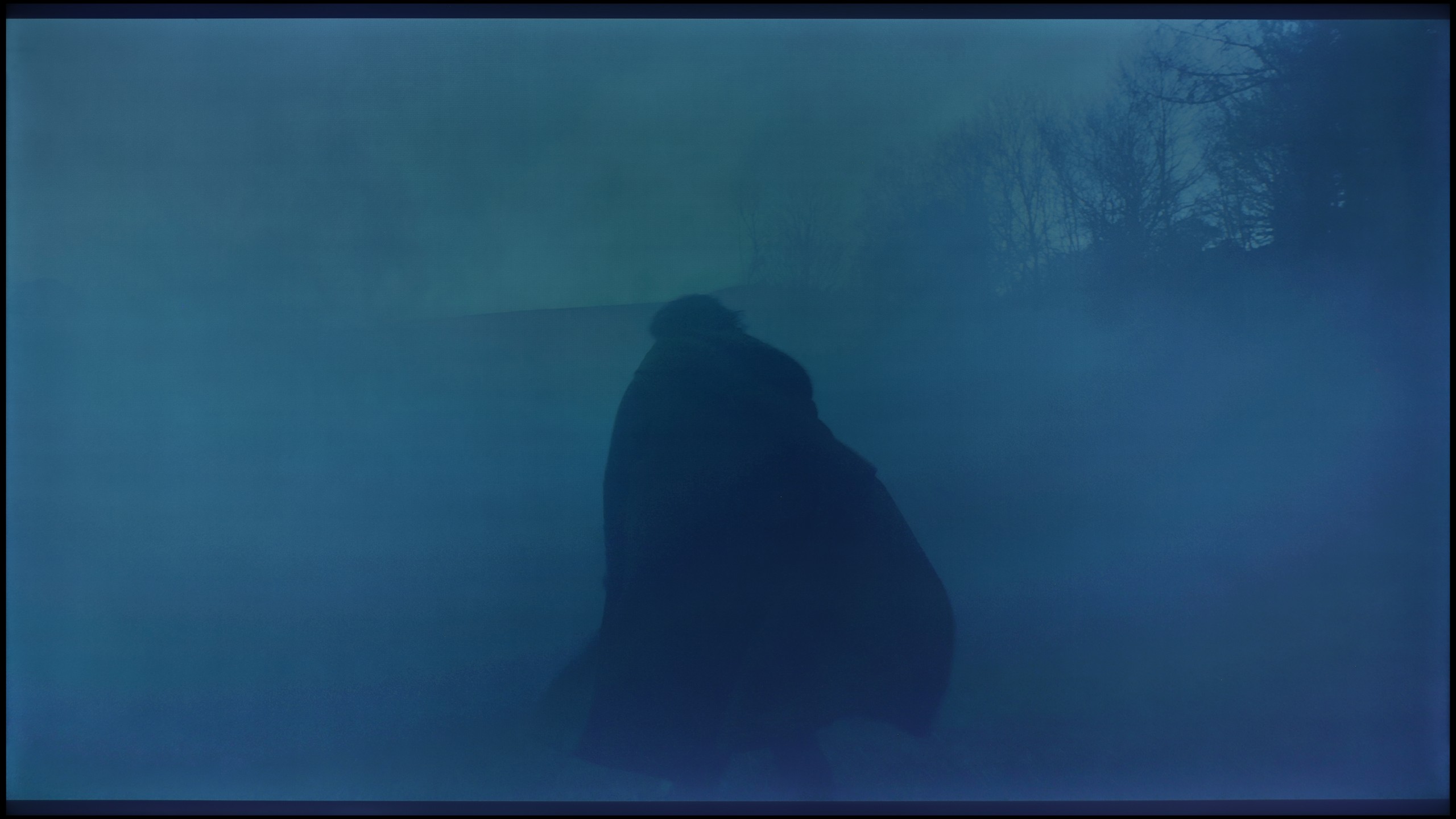






In the case of high-quality content, TCL P755 offers decent fluidity of tonal transitions. Although subtle imperfections can be noticed in the blending of colours, especially in more complicated gradients, these are typical for TVs in this price range. During tests in movie scenes, these issues were noticeable at certain moments; however, in most cases, one really has to take a close look to spot these flaws. For the average user, they shouldn't pose a significant problem in everyday use.
The issue of the fluidity of tonal transitions, or popular grading, is another area where the P7K / P79K evokes mixed feelings and surprises with its dual nature. If we were to assess solely its ability to render smooth colour gradients, we would undoubtedly award it a solid score of 8/10. Unfortunately, this entire positive image is disrupted by the use of very aggressive and visually unpleasant dithering. This artifact is particularly noticeable on demanding test screens – such as the one depicting an actor submerged in red water – where rough, unnatural textures appear on uniform colour planes, revealing the digital nature of the image. This is particularly disappointing as it is not a new problem. It seems to be a sort of hangover from previous generations of budget TCL models, which is a shame, as it marred what is fundamentally a quite competent image and is a mistake that could have been avoided.
Image scaling and smoothness of tonal transitions
5.5/10
7/10
Smooth transition function

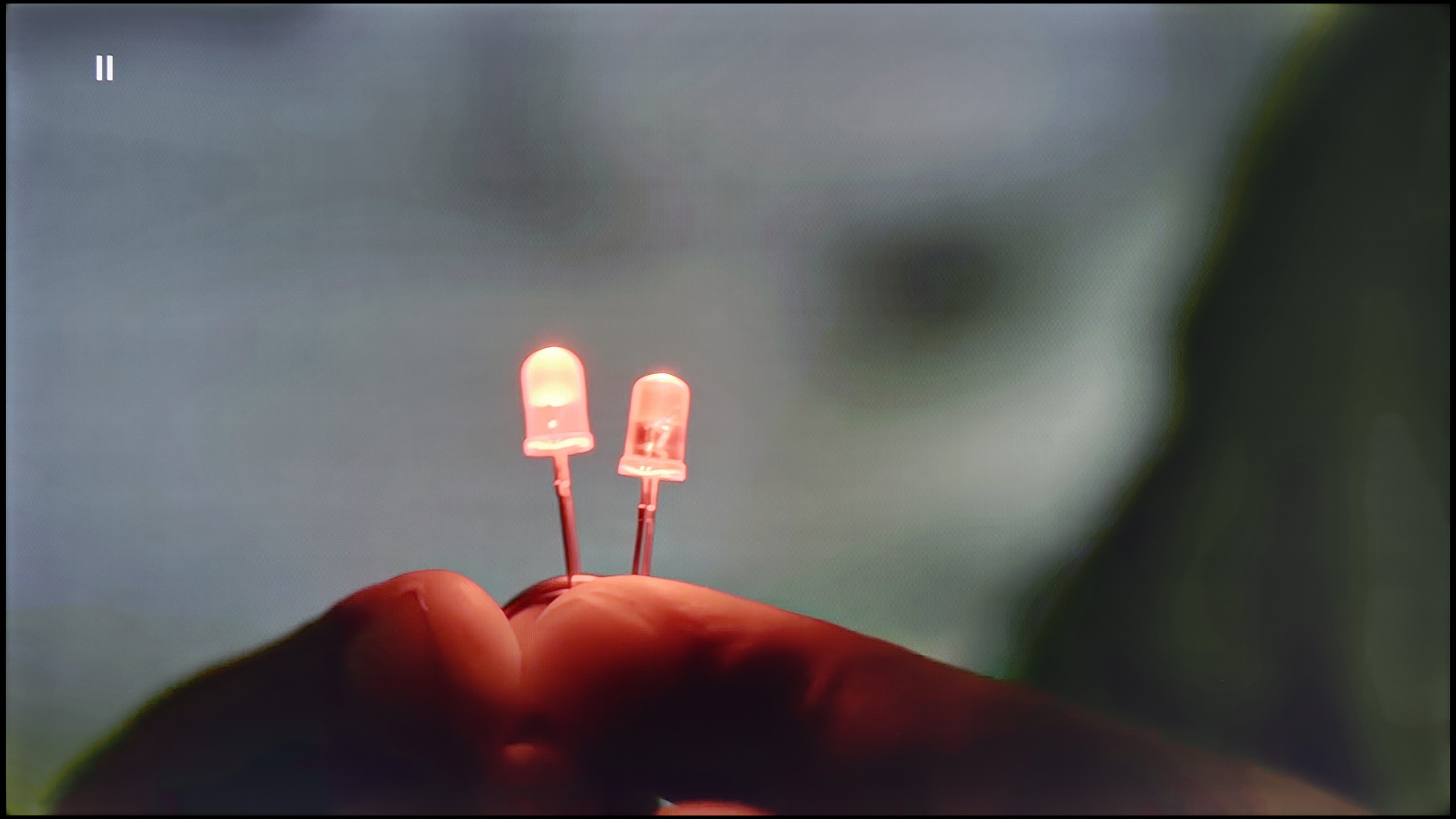
Image without overscan on the SD signal


The “Gradual Smoothing” function works quite well, effectively eliminating visible boundaries between different shades of the same colour. Thanks to it, tonal transitions are smoother. Unfortunately, this function is not available in HDR mode, which can affect the quality of tonal gradation in higher dynamic range materials.
In the case of image scaling, the television does not perform its best. There are noticeable edge cut-offs, particularly evident on the model's figure and the branches of trees. The blurring of details in these areas affects the overall sharpness of the image. This may be noticeable when watching content in a lower resolution. Additionally, SD quality image is displayed with slight cropping at the top as well as the bottom.
After a series of harsh evaluations, thankfully, it’s time for some praise, and this is deserved by the TCL AiPQ image processor for its work in the field of digital processing and content scaling. It should be noted right away that we are not talking about the level known from flagship models; nonetheless, in the price segment represented by the P7K/P79K, the results achieved are more than solid. The function that smooths tonal transitions performs particularly well, effectively eliminating posterization, which are the characteristic bands often visible in materials with higher compression, for instance, from choose.tv. The algorithm can elegantly remove unwanted gradients, which ultimately looks really good. The television also handles upscaling competently, which means the task of raising low-resolution materials to 4K standard. The resulting image, although it may seem a bit too sharp out of the box, is fortunately not a problem. The software allows for free adjustment of this parameter using a sharpness slider, allowing the final appearance to be easily tailored to personal preferences.
Blur and motion smoothness
4.3/10
4.8/10

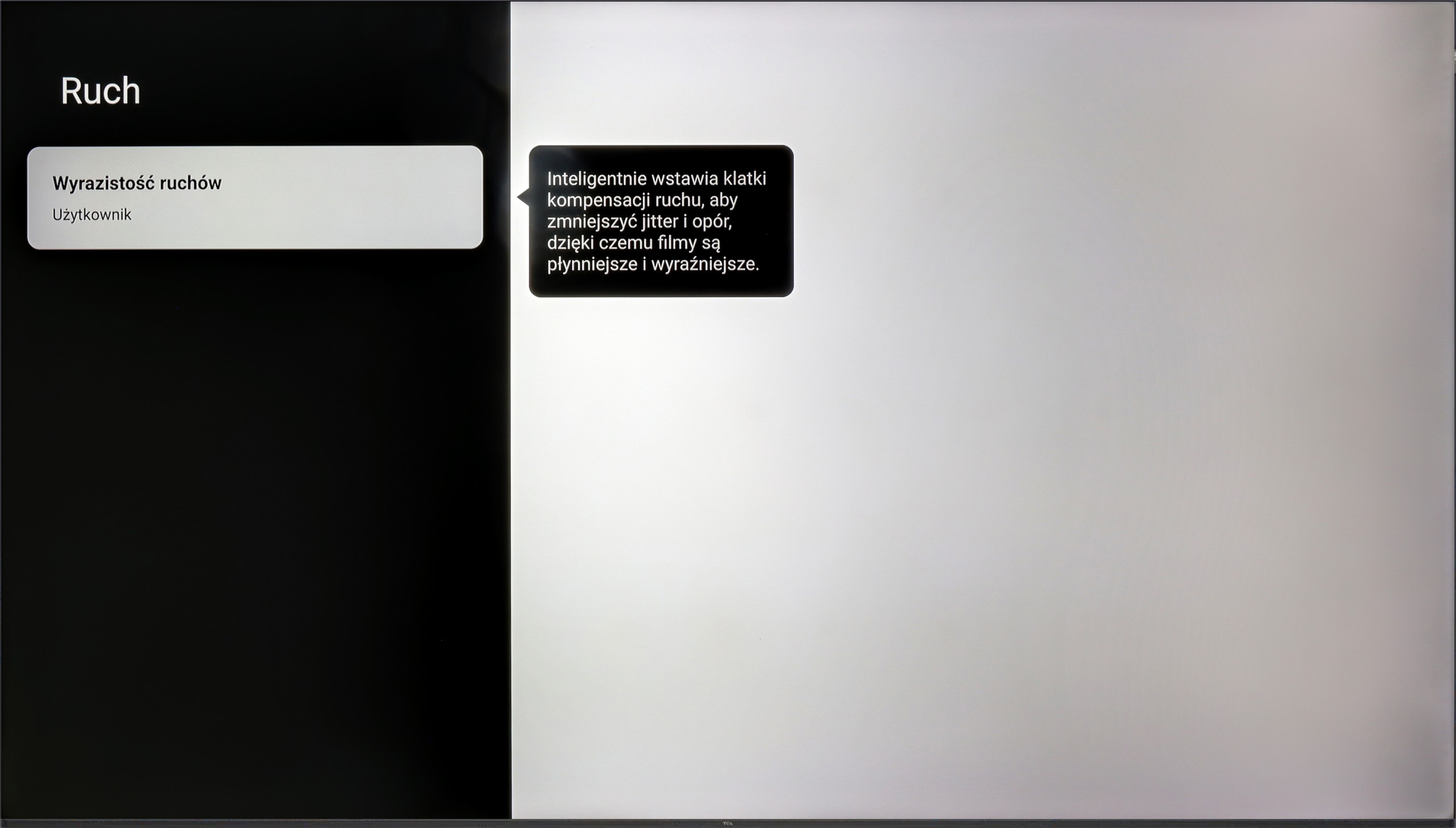
Blur (native resolution, maximum refresh rate):




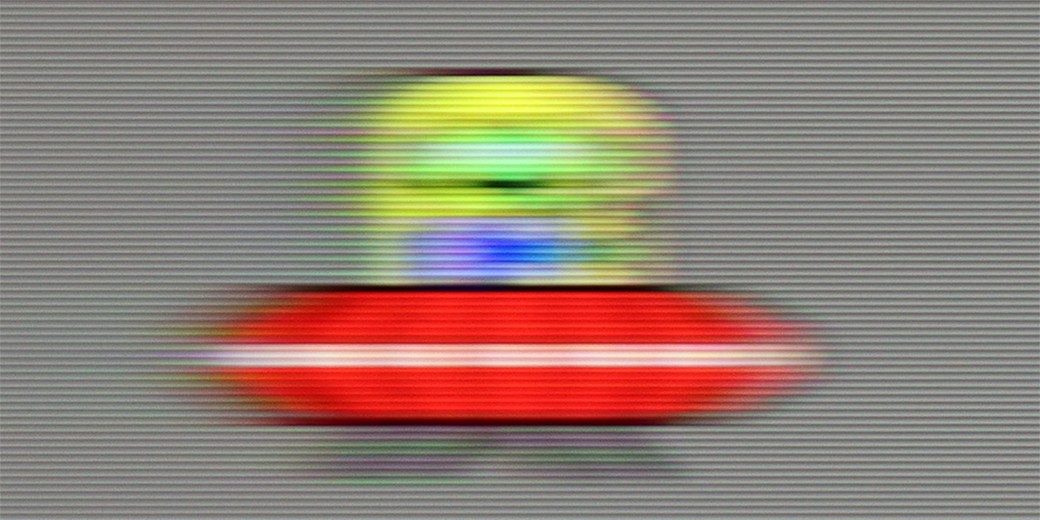
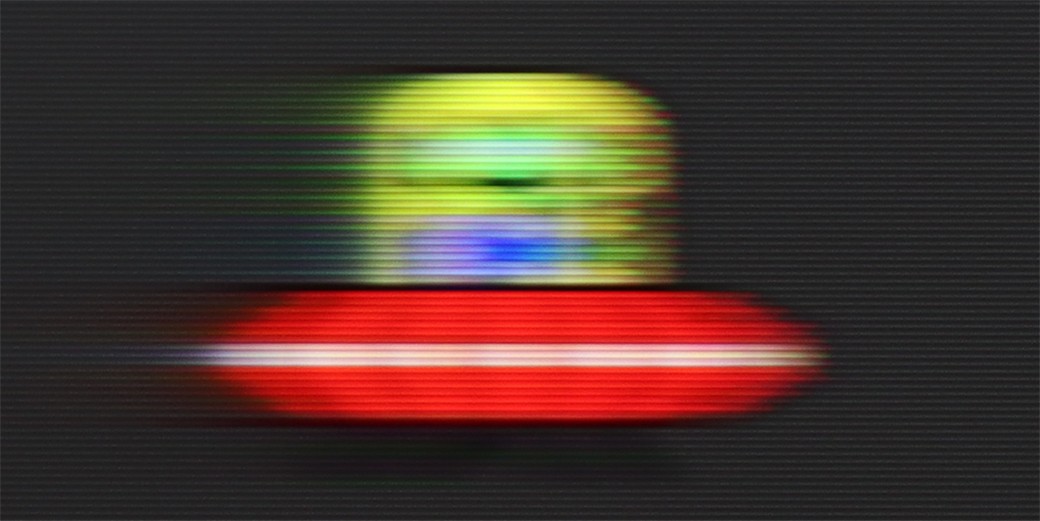
The television offers decent, though not perfect, results in terms of motion smoothness. In the case of movies, the television has a "Flicker Reduction" feature that allows for adjustment of motion smoothness on a scale from 1 to 10. With this option, we can tailor the image appearance to cinema or more theatrical preferences (with lower or higher speed).
The issue of fluidity and sharpness of motion image is inextricably linked to the fundamental parameter of the panel, and in the case of the TCL P7K/P79K, we are dealing with a panel that has a native refresh rate of 60 Hz. This specification at the outset defines its capabilities and makes it hard to unequivocally recommend it to enthusiasts of dynamic sports broadcasts. During quick camera movements, the image loses sharpness, and the panel also shows a slight tendency to smudge, which may be noticeable to more sensitive viewers. Fortunately, not everything in this aspect has been left to chance. The manufacturer has implemented a simple motion smoothing system, which is primarily used in film materials recorded at 24 or 30 frames per second. Thanks to a dedicated slider, the user can decide on the final nature of the motion – from maintaining a fully cinematic, slightly jerky image, to achieving a very smooth, almost theatrical effect. It is a simple yet effective tool that allows one to adjust the viewing experience to their own preferences.
Console compatibility and gaming features
5.3/10
6.7/10
- ALLM
- VRR
- VRR range48 - 60Hz48 - 120Hz
- Dolby Vision Game Mode
- Correct implementation of HGIG
- 1080p@120Hz
- 1440p@120Hz
- 4K@120Hz
- Game bar

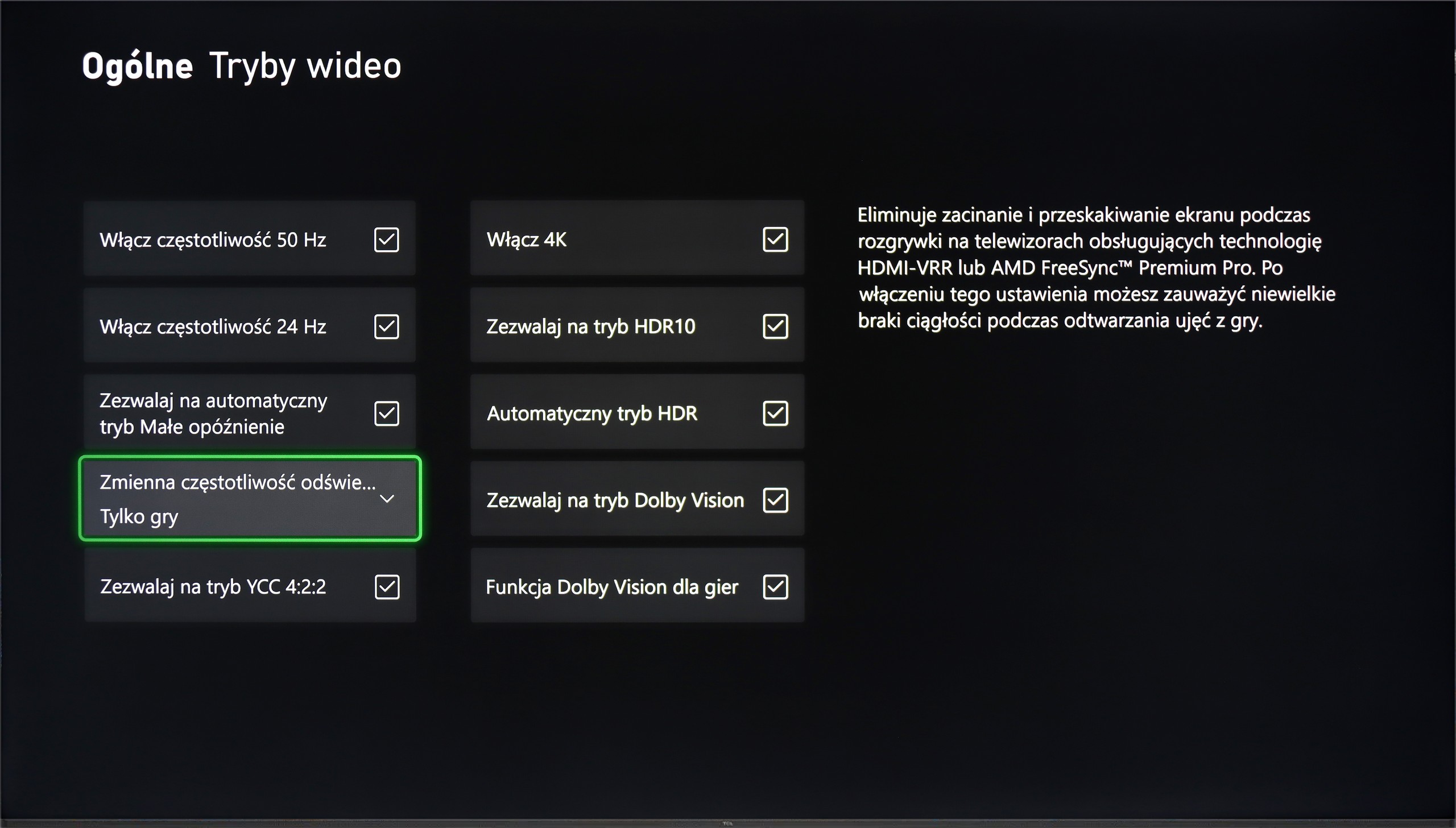

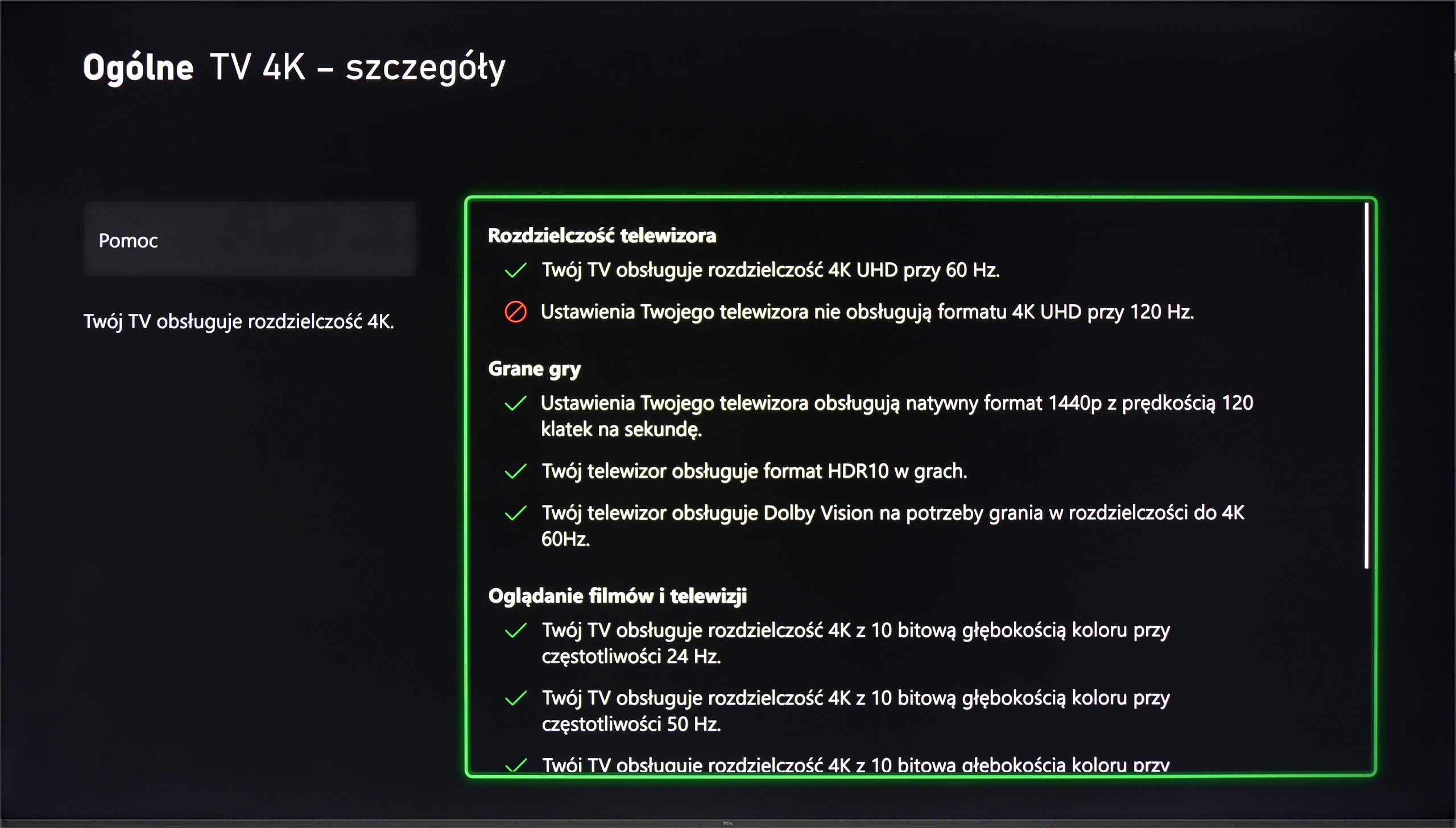

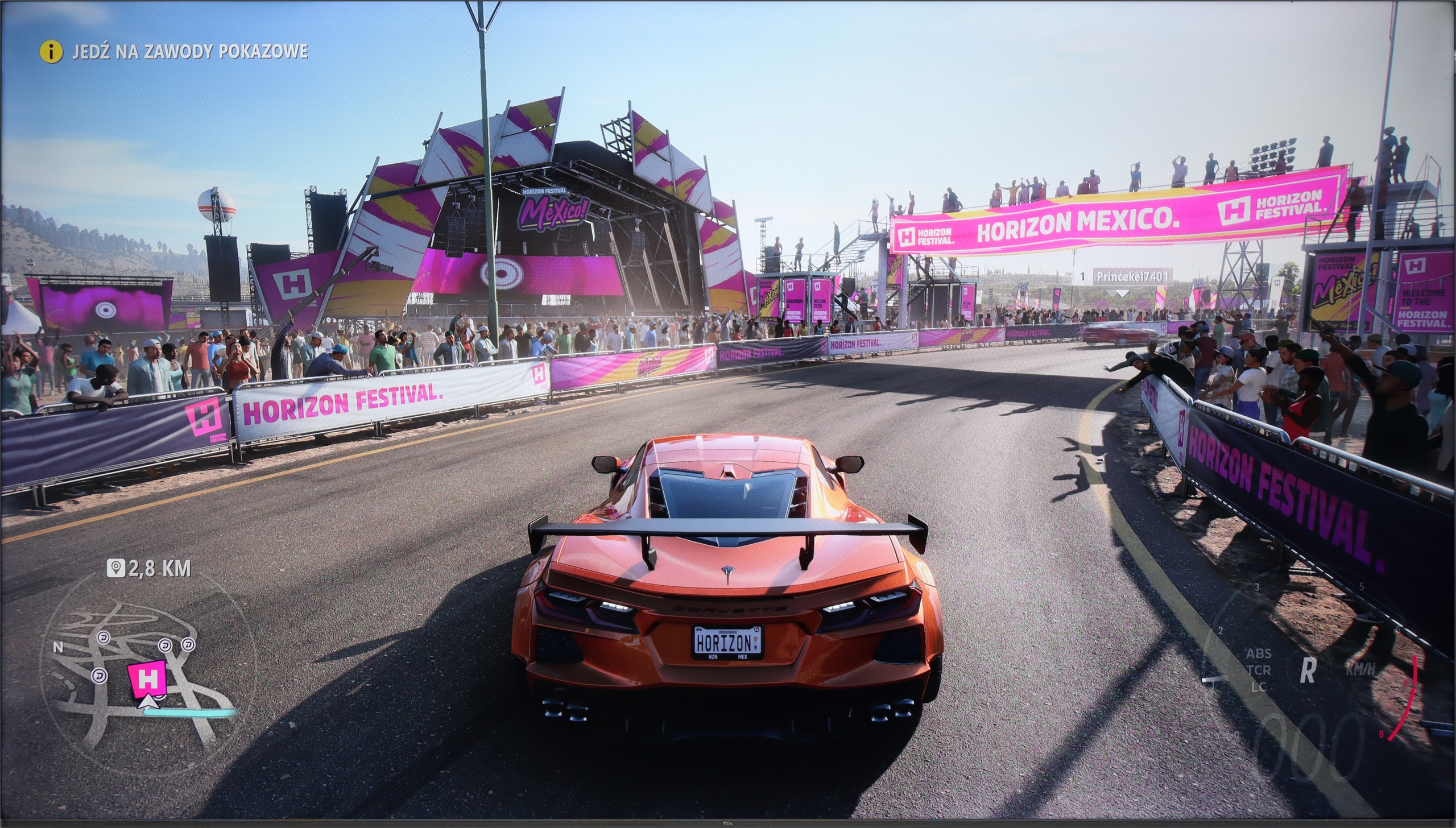

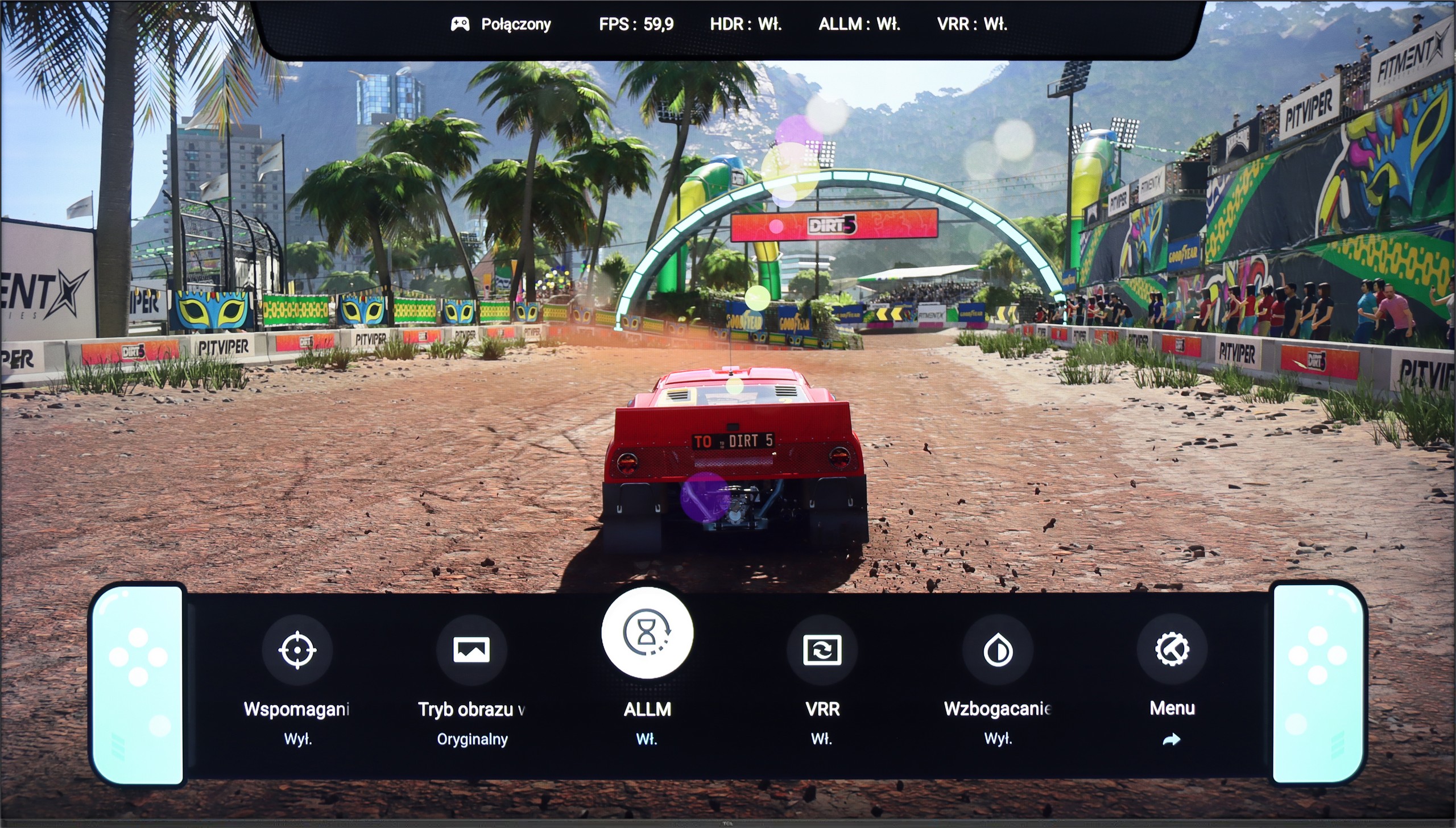
The device offers a range of features useful for gamers, such as ALLM (Auto Low Latency Mode), VRR (Variable Refresh Rate), Dolby Vision for gamers, and Game Bar. ALLM automatically switches the TV to low latency mode, significantly improving responsiveness to commands from the controller and minimising input lag. VRR synchronises the screen refresh rate with the number of frames generated by the console, eliminating the tearing effect and providing smoother gameplay. Dolby Vision for gamers enhances picture quality by offering better colour and contrast reproduction in games that support this format. The Game Bar feature allows quick access to game settings and monitoring of key parameters such as response time.
However, the TV has some limitations. The 60 Hz panel prevents the display of signals with higher refresh rates at different resolutions, which may affect the fluidity of the image in dynamic games. Additionally, the lack of support for G-Sync technology for PC may impact the quality of gameplay on a computer. It is also worth noting that the HGiG mode, which aims to improve image quality in HDR games, does not work correctly on this model, negatively affecting the visual experience in HDR-supported games.
Although on paper the native 4K@60Hz matrix might suggest that the TCL P7K/P79K is not a TV tailored for gamers, the reality turns out to be surprisingly different. On the contrary, the manufacturer has ensured a rich set of features that make it a very friendly companion for next-generation consoles. Onboard, we find key technologies such as ALLM, which provides automatic switching to low-latency mode, and VRR, or variable refresh rate, which eliminates screen tearing. The list is rounded off with support for Dolby Vision Gaming and a simple yet functional Game Bar. However, the real and extremely pleasant surprise is something else. It turns out that the TV effortlessly supports a high refresh rate signal of 120Hz, but at lower resolutions – 1080p and 1440p. This is fantastic news for console owners, who know how rarely games run in native 4K at a full 120 frames per second. The option to choose between higher resolution and doubled smoothness is therefore an incredibly sensible compromise.
In summary, while the P7K/P79K may not be the target screen for the most passionate, tournament gamers, it offers a package of options for casual or occasional console users that is hard to find among many competitors at this price point.
Input lag
10/10
9.9/10
SDR
HDR
Dolby Vision
P755 offers exceptionally low input lag, which is a significant advantage for gamers. In every mode, whether SDR, HDR, or Dolby Vision, the television achieves impressive results. In every resolution, the input lag is only 11 ms, well done! Even in Dolby mode, the television maintains the same low level of latency. With these achievements, the television provides remarkable responsiveness and excellent gaming experience, with no noticeable delays.
Completing this rich package for gamers is a parameter that has a direct impact on comfort and performance in gameplay – input lag. Already in native 60 Hz mode, the television can boast an excellent result of just 15 ms. However, the real magic happens when switching to 120 Hz mode, where the lag drops almost by half, reaching values below 10 ms. Such responsiveness ensures that every command from the controller is transmitted to the screen in the blink of an eye, which will be appreciated not only by professionals but by anyone who values smooth and direct interaction with the game.
Compatibility with PC
2.5/10
2/10

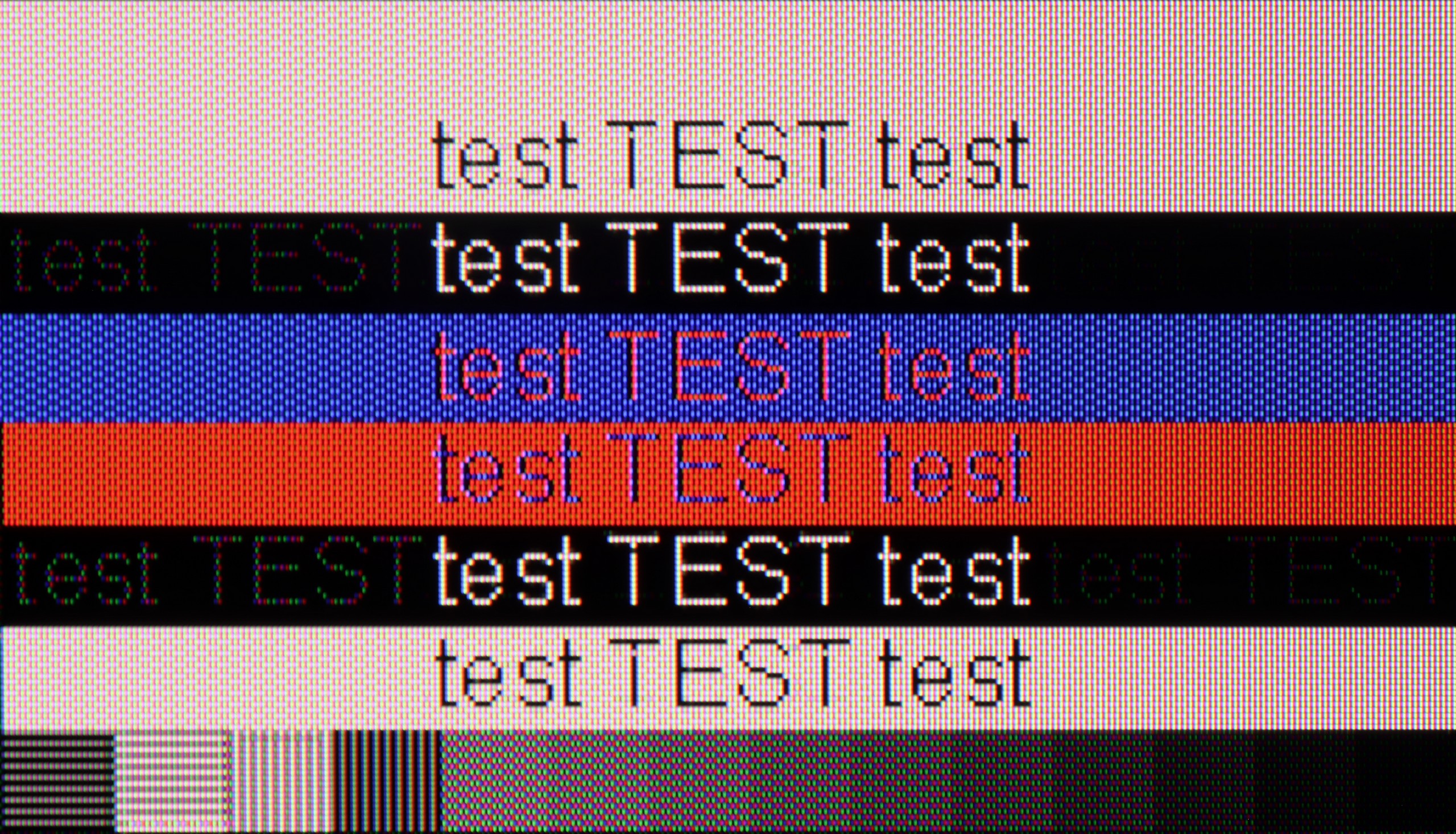
When connecting the TCL P755 to a computer, the first thing you might notice is the support for chroma 4:4:4, which ensures accurate colour reproduction in details, especially when working with text and graphics. Unfortunately, despite this support, the readability of fonts leaves much to be desired, particularly in the case of dark text and shapes on a dark background. This issue arises from limited resolution in darker shades, where the applied dithering makes the pixels resemble those known from Full HD. This is especially noticeable with small fonts, making comfortable office work on a large screen difficult. The upside, however, is the very low input lag of 12 ms, which makes the television suitable for occasional gaming on the computer, especially in dynamic games. Ultimately, while the TCL P755 may be a decent choice for PC gaming, it may disappoint users expecting high text readability.
We finally arrive at the area that can undoubtedly be described as the biggest achilles heel of the TCL P7K/P79K – its compatibility with a PC. This is paradoxical because on paper, everything looks promising. The presence of G-Sync and support for high refresh rates at lower resolutions could suggest that it will also be a great monitor. Unfortunately, practice brutally verifies these assumptions. The key problem is the lack of support for full 4:4:4 chroma sampling. In everyday use, this translates to terrible font rendering quality – they, especially coloured ones, become jagged, surrounded by artifacts, and simply poorly readable. And that’s not all, as in PC mode, the problem of aggressive dithering also becomes apparent, giving the whole image an artificial, overly digital look. The only consolation in this situation is the fact that in games we can take advantage of the extra hertz and G-Sync technology, but these are not advantages that could compensate for the fundamental shortcomings in displaying a static interface. The verdict is therefore clear: while it may still hold up as a screen solely for gaming with a PC, in the role of a monitor for work or browsing the internet, the P7K/P79K simply performs poorly.
Viewing angles
3.2/10
3.2/10
P755, equipped with a VA panel, offers average viewing angles. In practice, this means that the brightness of the image significantly drops when viewing the screen at an angle. VA panels, while providing better contrast and deeper blacks compared to IPS panels, have poorer characteristics in terms of viewing angles. IPS panels, known for their wider viewing angles, offer a more stable image from various angles, but usually at the cost of slightly lower contrast and black depth. Although the VA panel contributes to better contrast, the decrease in brightness at an angle is noticeable and can affect viewing comfort in larger groups or in different positions in the room.
Moving on to the issue of viewing angles, we enter a realm where VA matrix technology dictates unavoidable conditions. As expected, this is the weak point of this model. It is enough to step away from the screen axis to observe a gradual degradation of the image: colours begin to fade, contrast noticeably drops, and blacks lose their depth. In direct confrontation with IPS panels, which are renowned for their generosity in this aspect, the VA matrix must concede superiority to its competitor. Is there a silver lining? Paradoxically, yes. Weak viewing angles are indeed the price we consciously pay for the fundamental advantage of this technology – a significantly higher native contrast and deeper blacks viewed head-on. Thus, we can say that this is a television that favours the viewer sitting in the “ideal” spot, offering them a maximally vivid image at the cost of universality.
Daytime performance
3.8/10
4.6/10

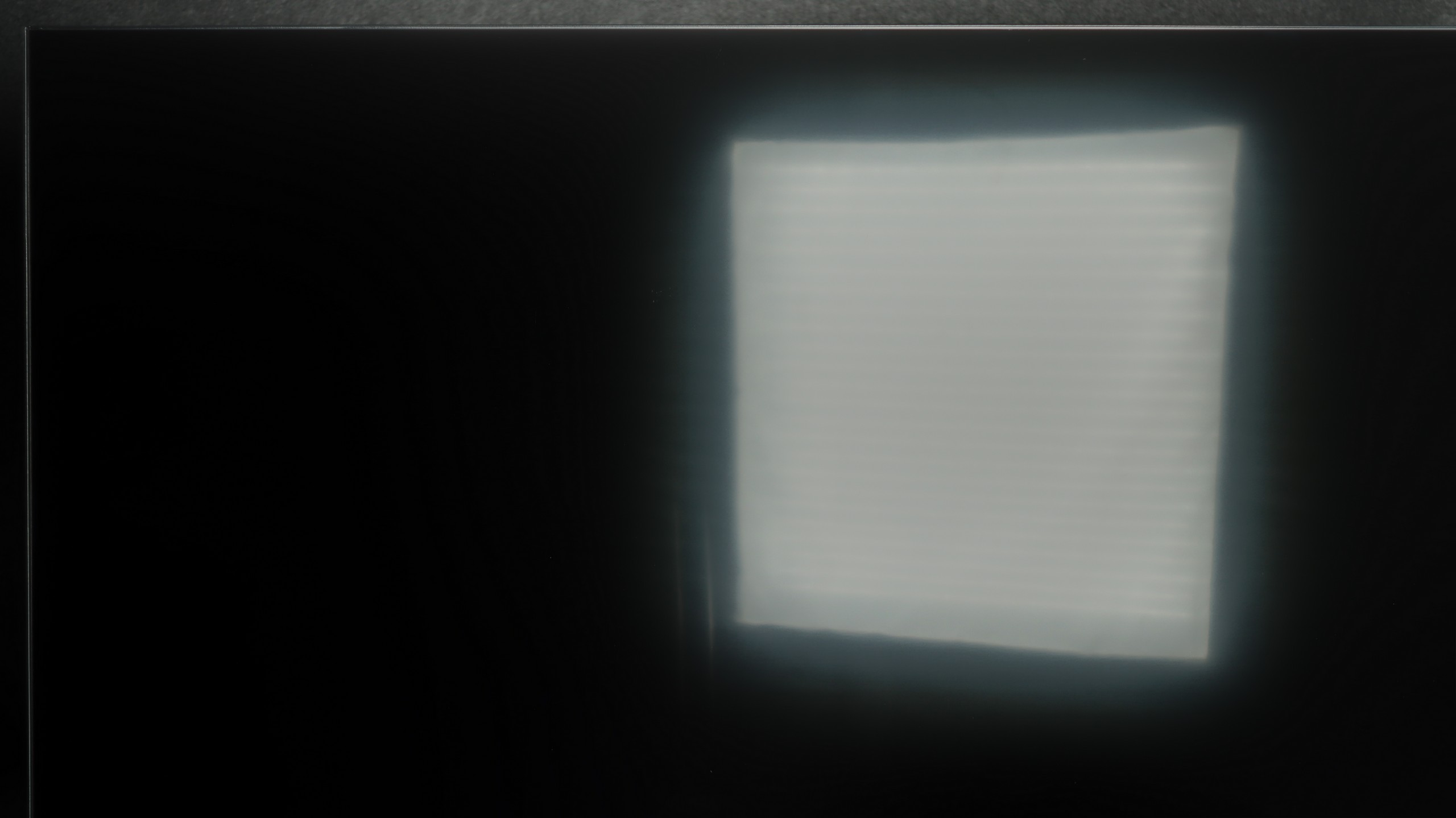

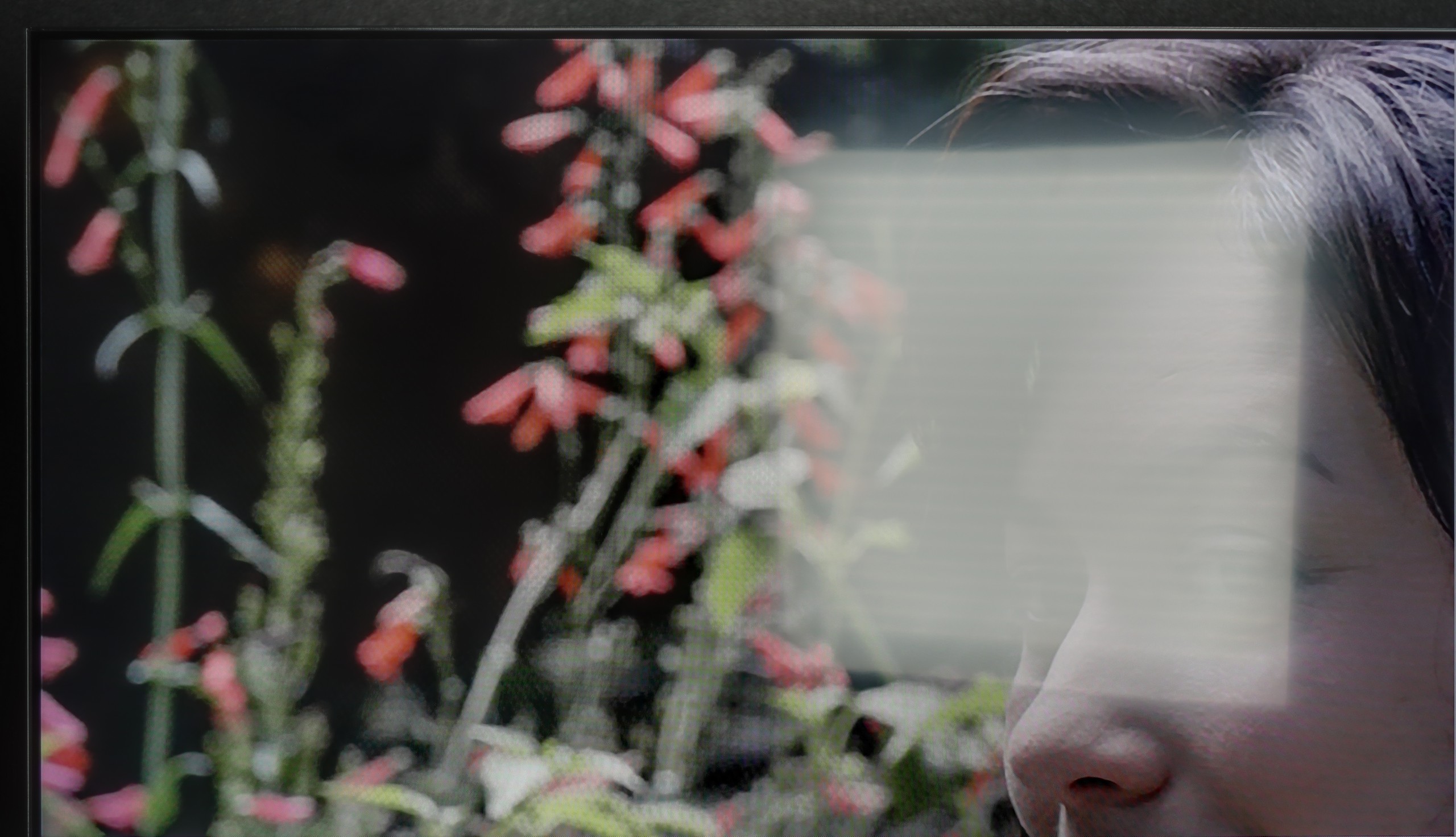
Panel brightness
Average luminance SDR
TCL P7K / P79K: 299 cd/m2
TCL P755: 290 cd/m2
The TV, equipped with a satin finish, performs well in moderately lit daytime conditions. Its brightness in SDR mode is about 290 nits, which is an average value. Unfortunately, the television has poor reflection handling, meaning that light reflections may be noticeable, especially in bright environments. Nevertheless, the TV offers good black levels during the day, due to the VA panel used, which handles contrast better than IPS panels. In practice, this means that despite the reflection issues, the TV can deliver a satisfactory picture in daytime conditions, maintaining a decent level of black and contrast.
The last practical test for any television is its daily performance in daylight conditions when it must compete with ambient light. In this competition, the TCL P7K / P79K starts with a certain advantage due to its satin screen coating. Its structure does quite well at suppressing direct reflections, dispersing them and protecting the image from excessive colour fading or brightening of blacks. However, passive combat against reflections is one side of the coin. The other is the active ability to "punch through" bright surroundings, and here one of the key limitations of this model comes to light. The previously mentioned peak brightness of around 300 nits is simply too low to ensure a fully comfortable and dynamic viewing experience in a heavily sunlit lounge. In such conditions, the image may lack punch, and scenes with lower brightness may lose readability.
Panel details
Subpixel Structure:

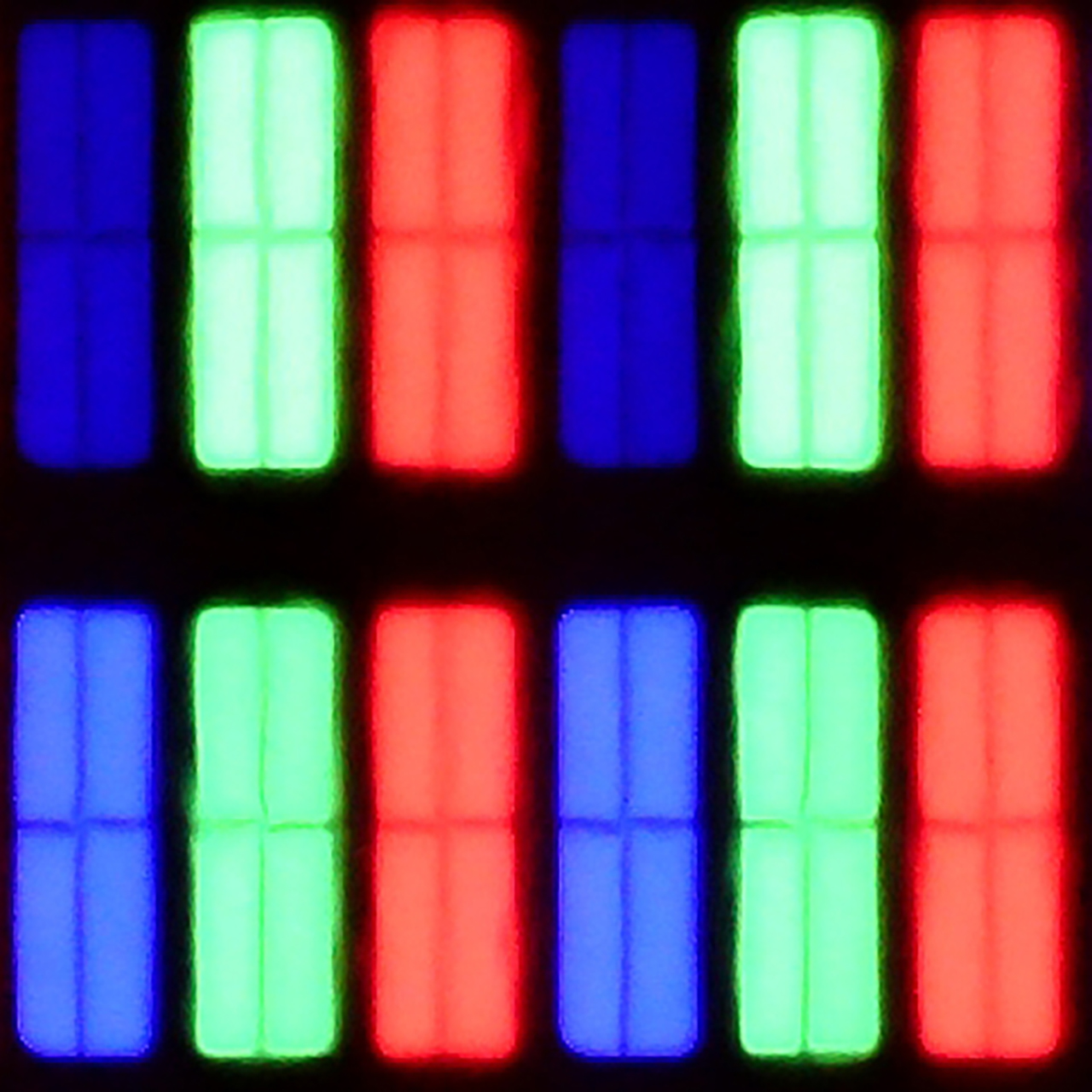
Panel uniformity and thermal imaging:

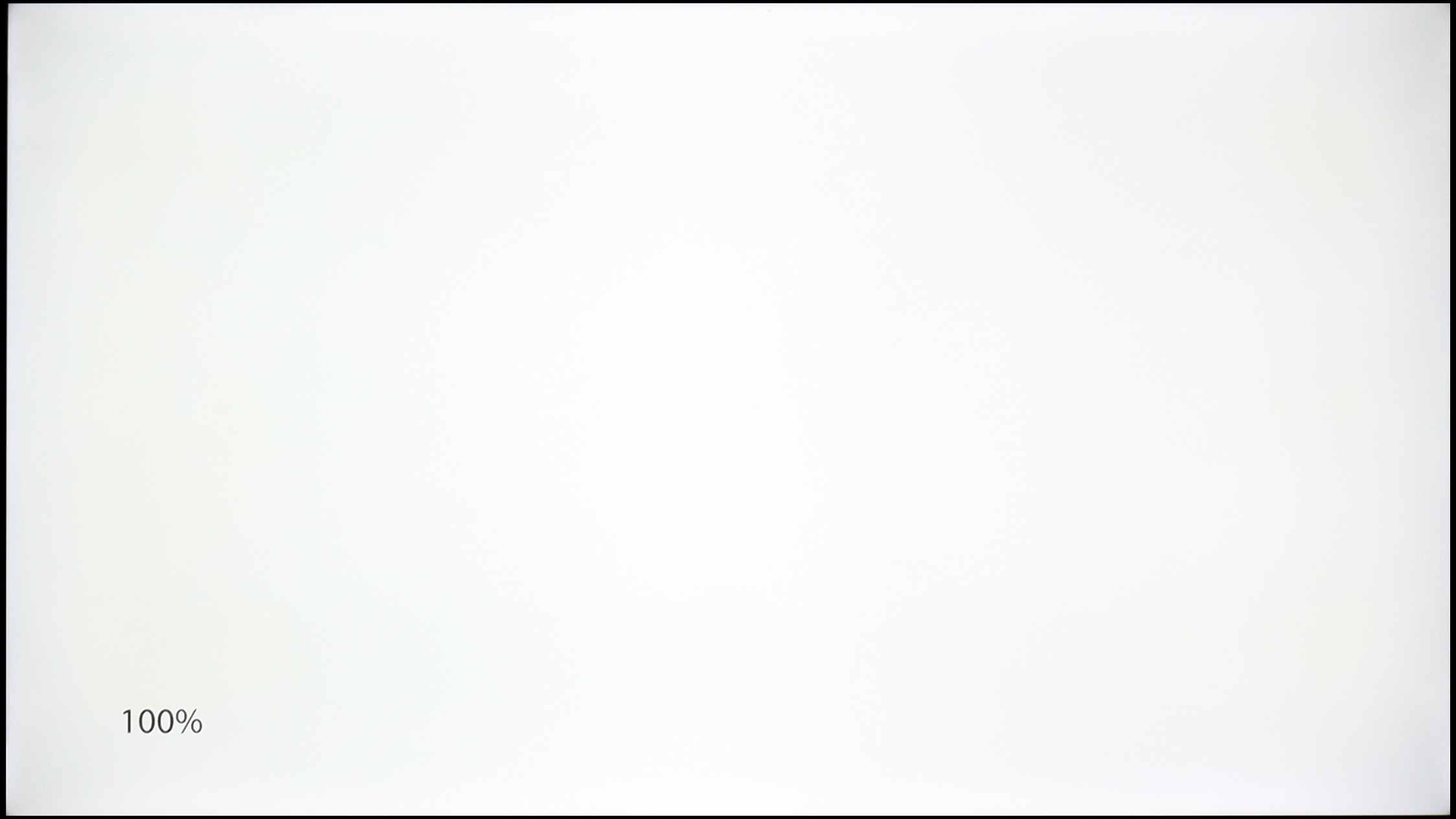
TCL P755
TCL P7K / P79K
TV features
7.3/10
7/10
- HDMI inputs3 x HDMI 2.0, 0 x HDMI 2.10 x HDMI 2.0, 3 x HDMI 2.1 48Gbps
- Other inputsRCA (Chinch)Toslink (Optical audio)
- OutputsToslink (Optical audio), eARC (HDMI), ARC (HDMI)Toslink (Optical audio), eARC (HDMI), ARC (HDMI)
- Network InterfacesWi-Fi 2.4GHz, Wi-Fi 5GHz, Ethernet (LAN) 100MbpsWi-Fi 2.4GHz, Wi-Fi 5GHz, Ethernet (LAN) 100Mbps
- TV receptionDVB-T, DVB-T2, DVB-S, DVB-S2, DVB-CDVB-T, DVB-T2, DVB-S, DVB-S2, DVB-C
Classic features:
- Recording to USB (terrestrial TV)
- Recording programming
- Picture in Picture (PiP)
- RF remote control (no need to aim at the screen)
- Backlit remote control
- Teletext
- Audio only mode
- Bluetooth headphones support
- Simultaneous Bluetooth headphones & TV audio
Smart features:
- AirPlay
- Screen mirroring (Windows Miracast)
- Voice search
- Voice search in native language
- Ability to connect a keyboard and mouse


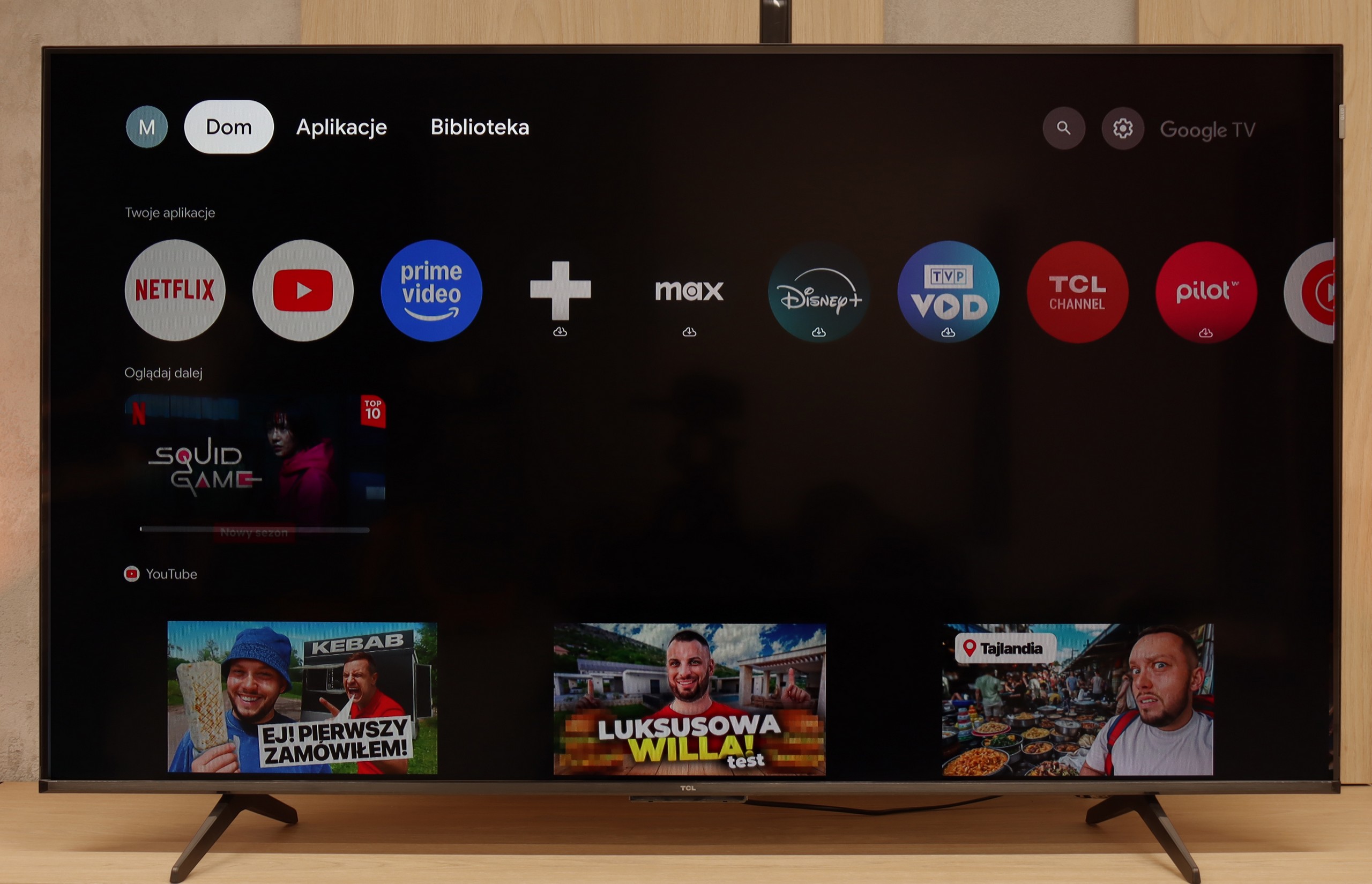
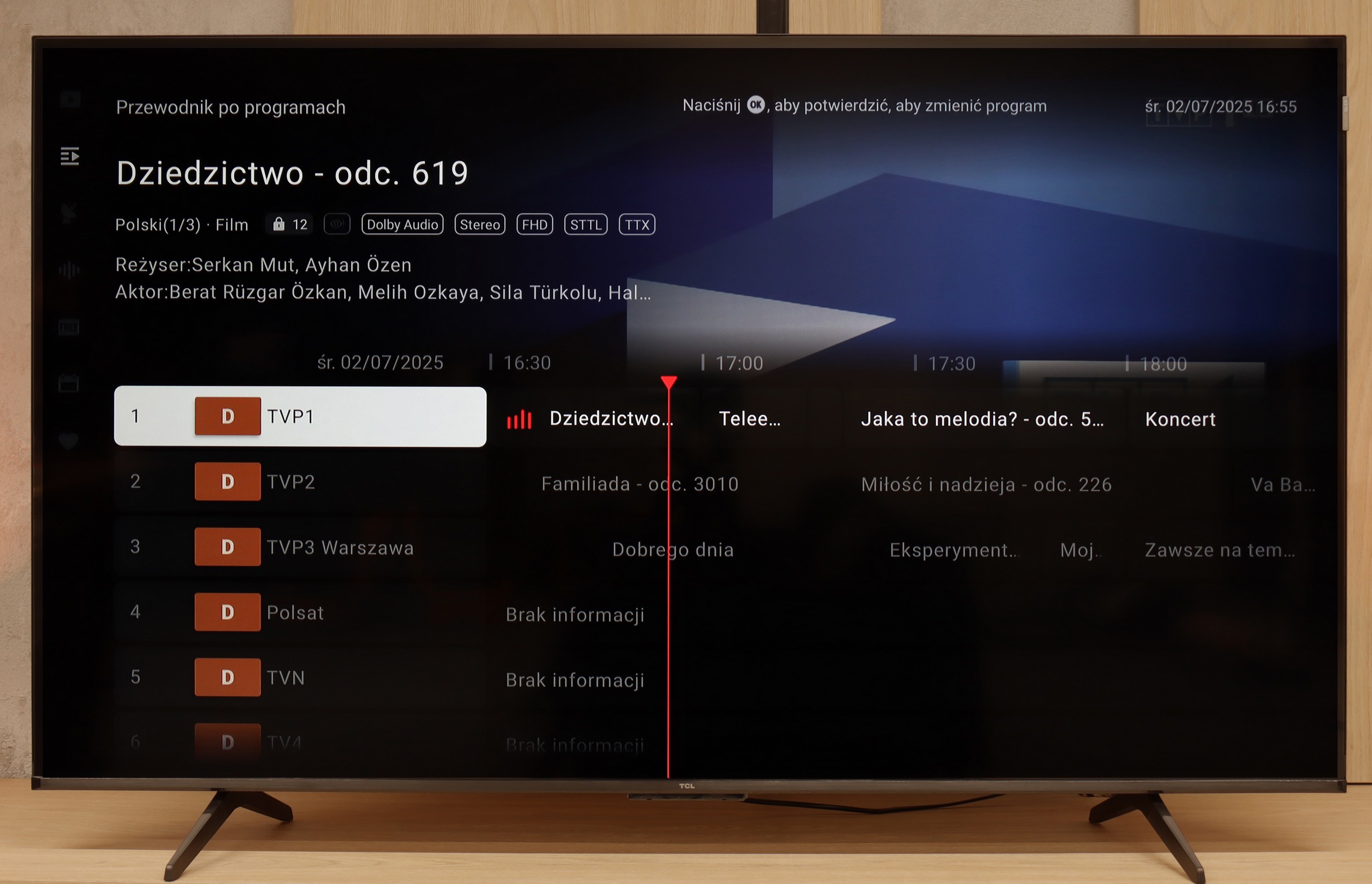
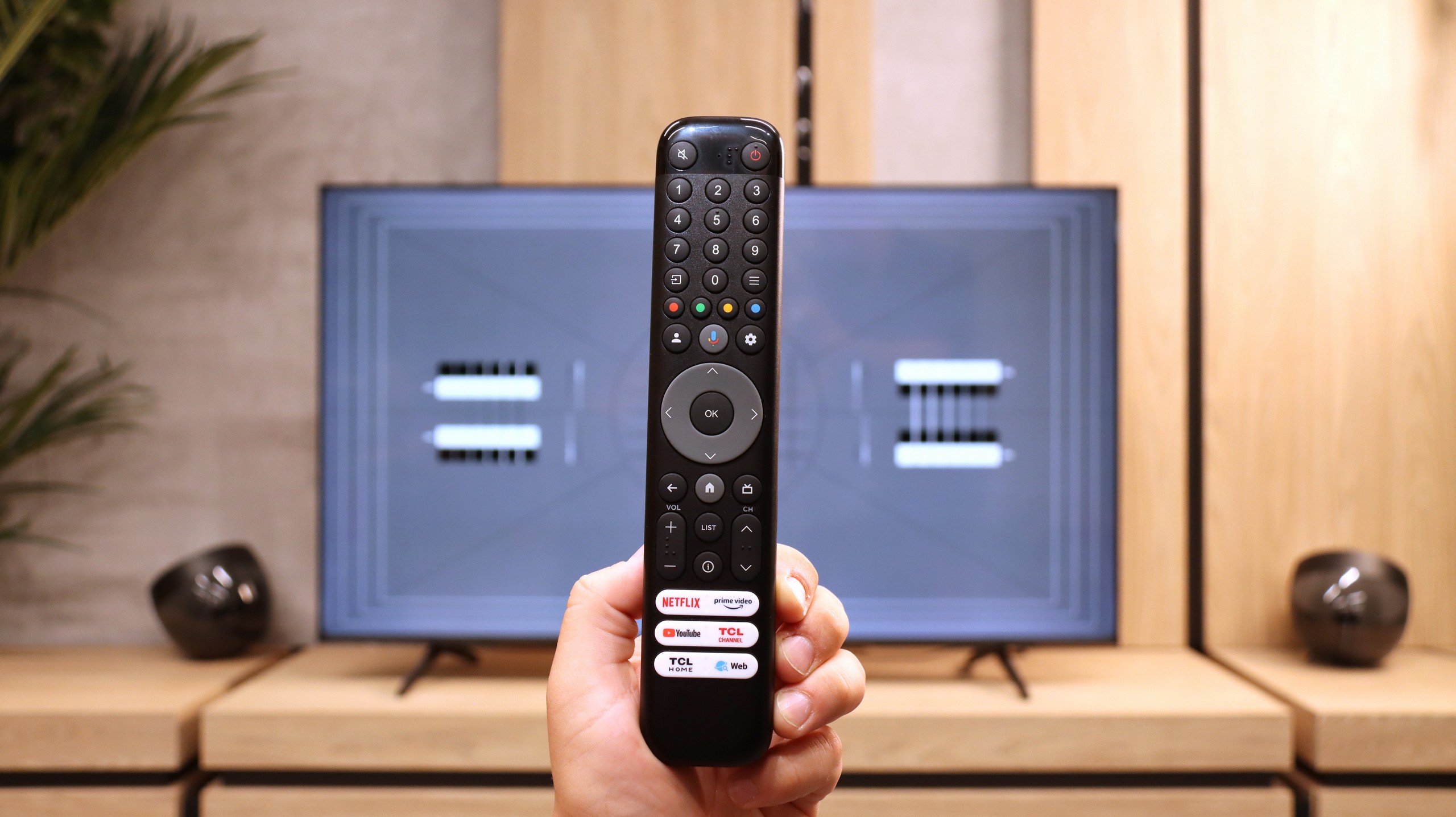
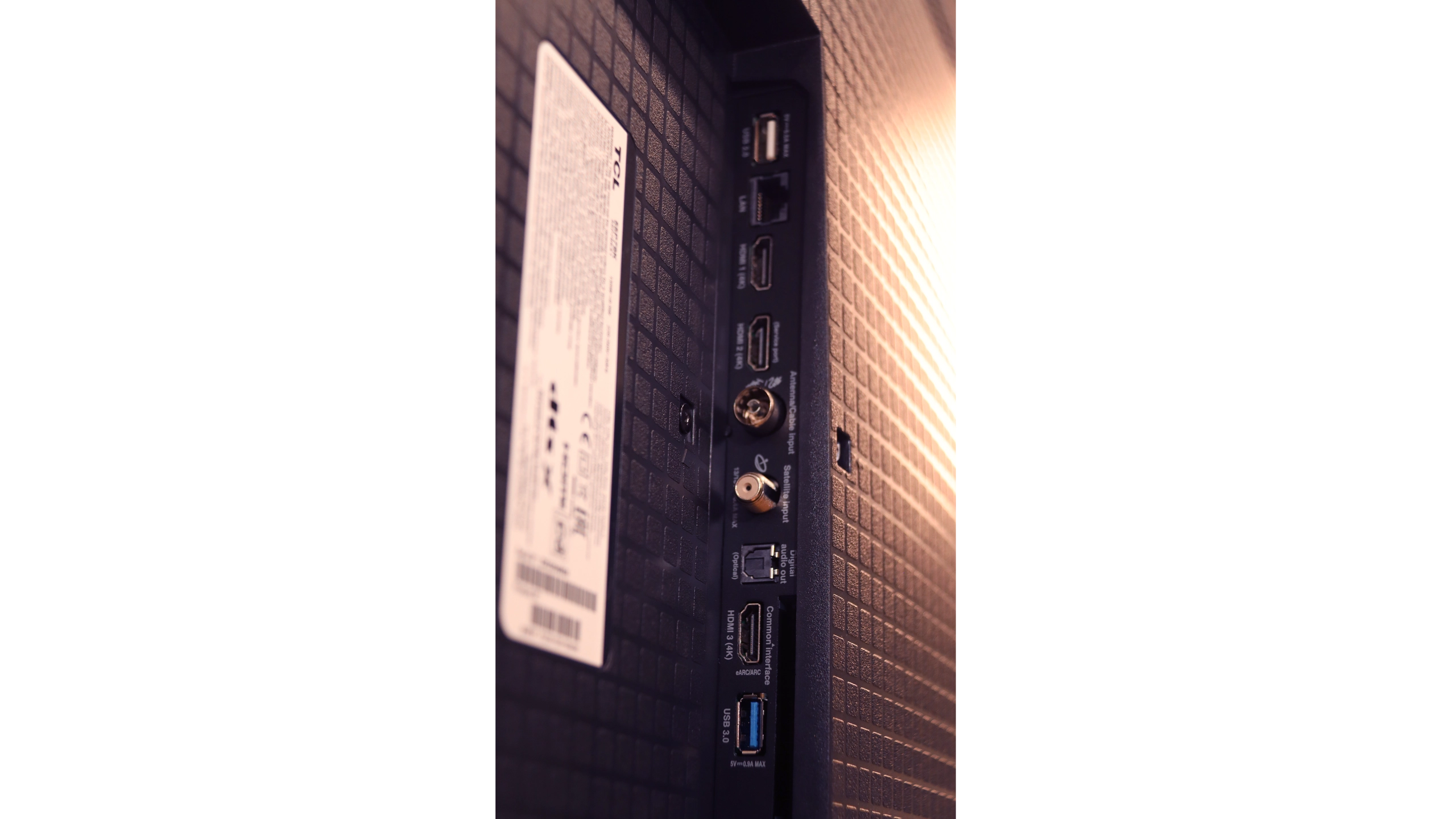
The device runs on the Google TV system, offering a wide range of features that enhance user comfort. Google TV, an extension of Android TV, provides personalised content recommendations based on viewed programmes and user preferences. It allows easy access to popular streaming apps, such as Netflix, YouTube, or Prime Video, and integrates with the Google Play Store for additional apps. The system works with other Google devices, enabling control of the television using Google Assistant and integration with a smart home system.
In terms of connectivity, the TV supports screen mirroring through Windows Miracast and AirPlay, allowing easy casting from other devices. It also allows for the connection of a keyboard, mouse, and Bluetooth headphones, while simultaneously using headphones and the built-in speaker with separate volume control for both audio sources. The TV remote operates on RF, so there's no need to aim at the screen, although it is not backlit. Additionally, the television supports audio-only mode and teletext, although there is no picture-in-picture (PiP) function.
Smart Features – the power of Google TV
The heart and operational brain of the TCL P7K / P79K is the Google TV system, which in itself is a huge advantage. This platform opens access to an almost endless library of applications from the Play Store, ensuring we won't miss any key streaming service. Integration with other devices is exemplary – Apple device owners will appreciate the seamless cooperation thanks to AirPlay, while users of Windows and Android systems can easily take advantage of screen mirroring features. The Google Assistant also deserves a mention, as it handles voice search in Polish exceptionally well, remaining one of the most effective and convenient solutions of its kind on the market. The operation of the system on the tested model can be described as "above average." The interface is mostly smooth, but during testing, it experienced occasional slowdowns and even sporadic "freezes" that required a moment of patience. Minor hiccups are also noticeable in the translation of some system messages, which can be clumsy – these are merely minor oversights on TCL's part that do not affect overall functionality.
Classic Features
In the age of smart systems, traditional television functions often take a back seat, and this case is no different. A significant advantage is the inclusion of a classic remote control with a numeric keypad, which does not require precise aiming at the screen for communication, significantly enhancing user comfort. The presence of Bluetooth technology for connecting external devices, such as headphones or speakers, also counts as a plus. However, this is essentially where the list of conveniences ends. It's evident that TCL has placed nearly everything on the Google TV card, treating classic features as an absolute minimum. Thus, we won’t find options for recording programs from built-in tuners to a USB drive or the once-popular PiP (Picture-in-Picture) feature. It is therefore a basic package that simply works but offers nothing beyond what is essential.
Playing files from USB
9.1/10
7.2/10
Supported photo formats:
Maximum photo resolution:

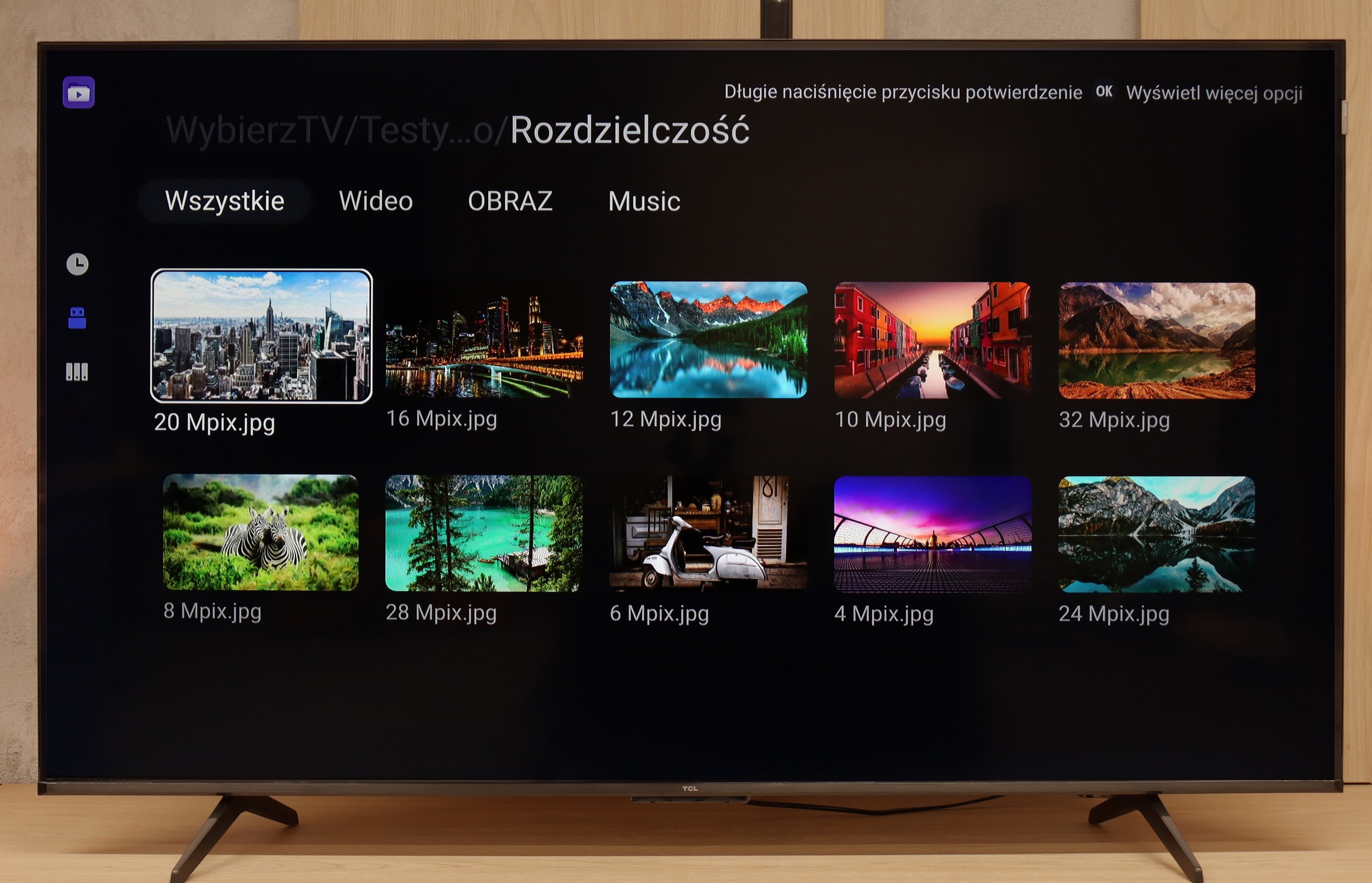
The TV will play most files and video codecs, and with the subtitles uploaded to the movie, you can change the font size. The biggest downside here is the lack of support for less popular photo formats.
The built-in media player in the P7k/P79k model is at least a curious case, putting us in quite an unusual situation. On one hand, its engine handles the decoding of most popular video formats, which is of course good news. On the other hand, we encountered a surprising and frustrating issue – the default application has a fundamental problem with correctly displaying Polish diacritic characters in subtitle files. Instead of letters like "ą", "ę" or "ż", empty squares or random, illegible symbols appeared on the screen. Fortunately, thanks to the flexibility of the Google TV system, this problem can be easily circumvented. Installing an alternative, advanced player, such as the tried-and-true VLC or KODI, fully resolves this inconvenience. The situation is strange in that this flaw did not occur in other TCL models we tested earlier. So we are dealing with a clear software oversight, which, hopefully, will be corrected in a future update.
Apps
9.6/10
9.6/10














































Sound
5.8/10
6.2/10
- Maximum volume--
- Dolby Digital Plus 7.1
- Dolby True HD 7.1
- Dolby Atmos in Dolby Digital Plus (JOC)
- Dolby Atmos in Dolby True HD
- DTS:X in DTS-HD MA
- DTS-HD Master Audio
The sound quality on the television is fairly average. The high tones are somewhat distorted and can sound unclear, while the bass is almost absent. The sound is dominated by mid-tones, which makes the overall audio experience balanced, but lacking in fullness. On the plus side, it supports advanced audio codecs such as Dolby and DTS, improving compatibility with a variety of audio sources and formats.
In terms of the built-in audio system, the TCL P7k/P79k presents a level that can be described as functional and adequate, but lacking in audiophile ambitions. The speakers play quite loudly, and dialogues in films and TV shows are conveyed clearly and without distortion, which is crucial for everyday use. However, the audio scene definitely lacks the foundation of low frequencies. This is a direct consequence of the absence of a dedicated subwoofer – an element that in the higher P8K series, took the form of a large Onkyo subwoofer at the back of the cabinet, which contributed to its sound strength. Here, that element is simply missing, making the sound seem flatter and devoid of the depth that creates a cinematic atmosphere. We also noticed a peculiar issue with the software – when attempting to set the maximum volume, the TV automatically reduces it. It's hard to definitively say whether this is a form of protection against distortion or a minor software glitch, but it's a shame, as the power reserves seem to be a bit greater.
